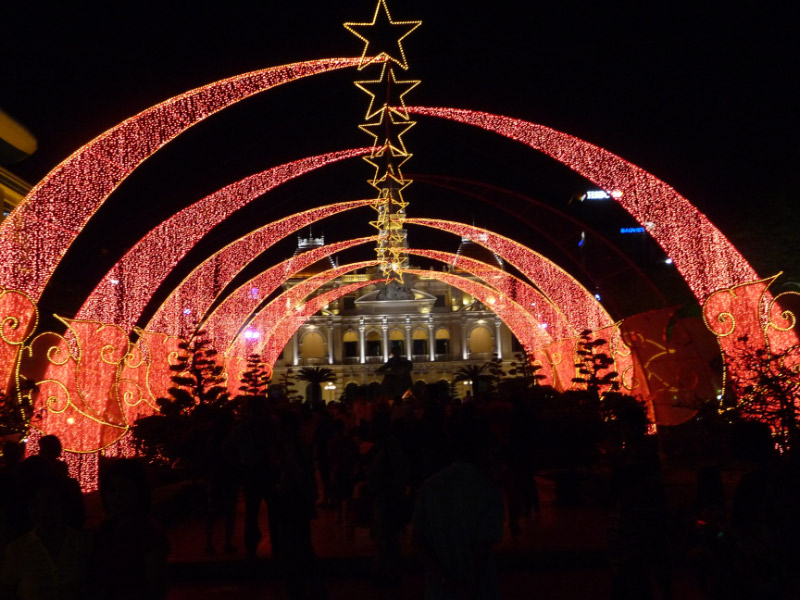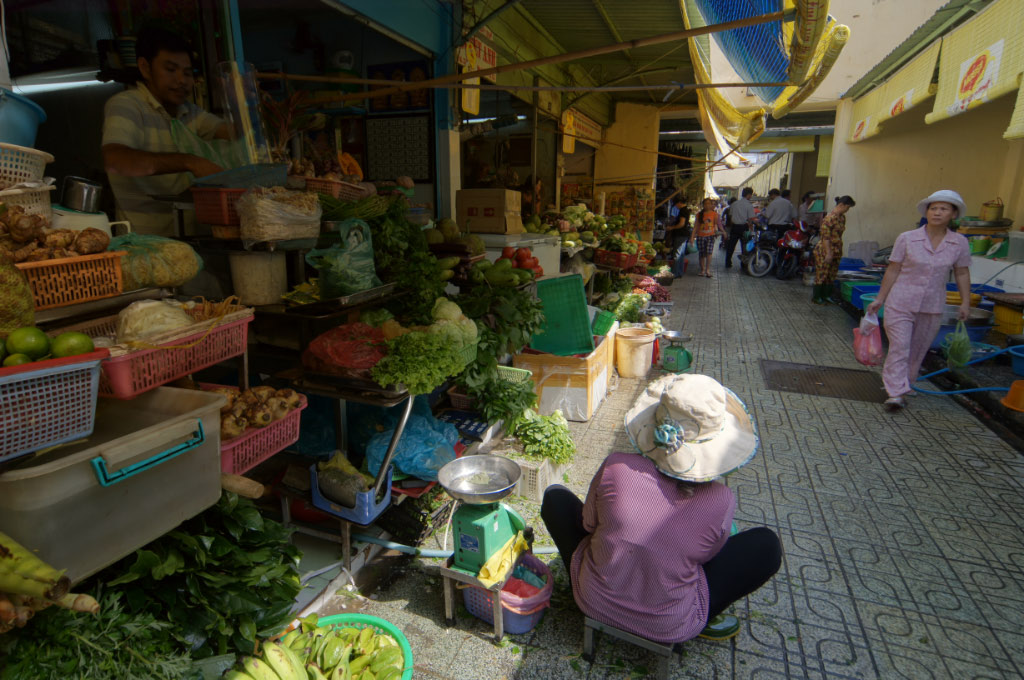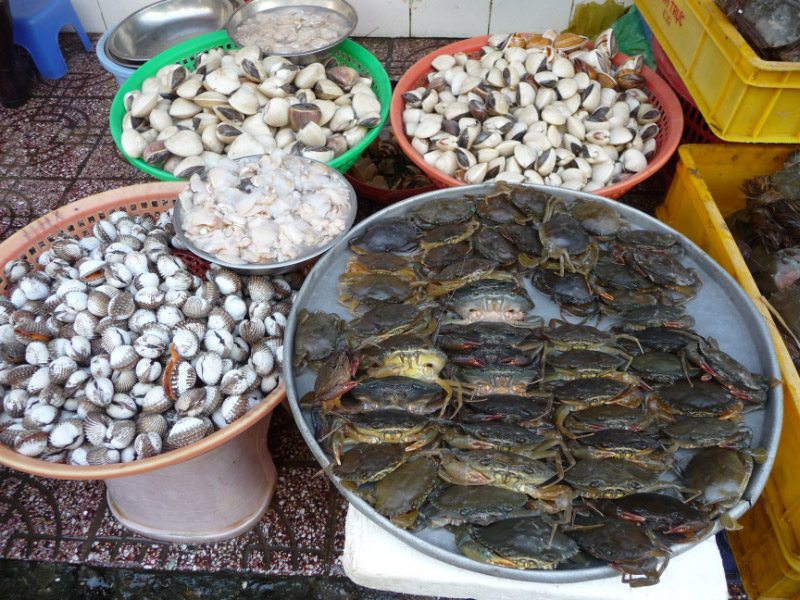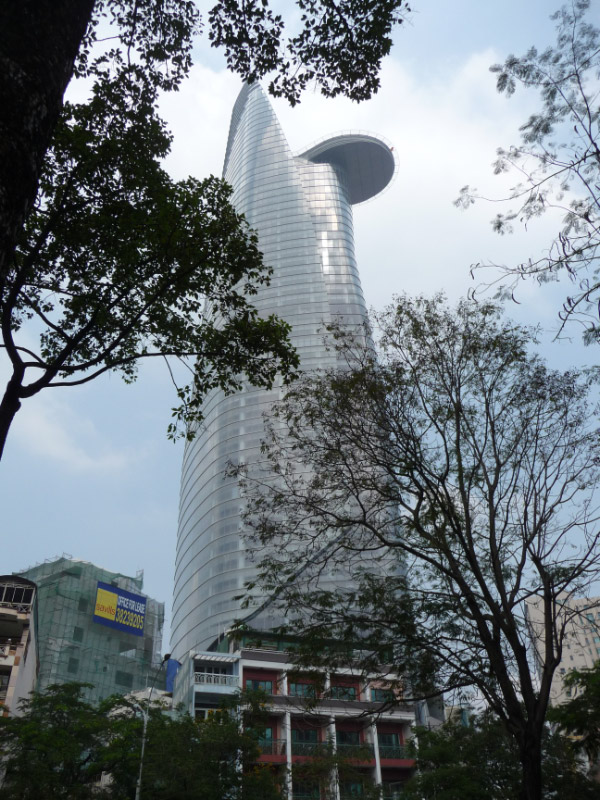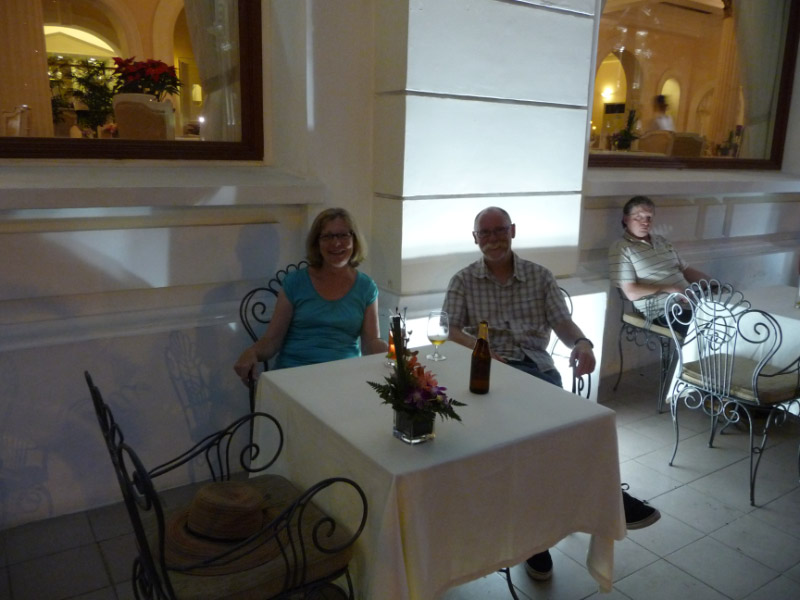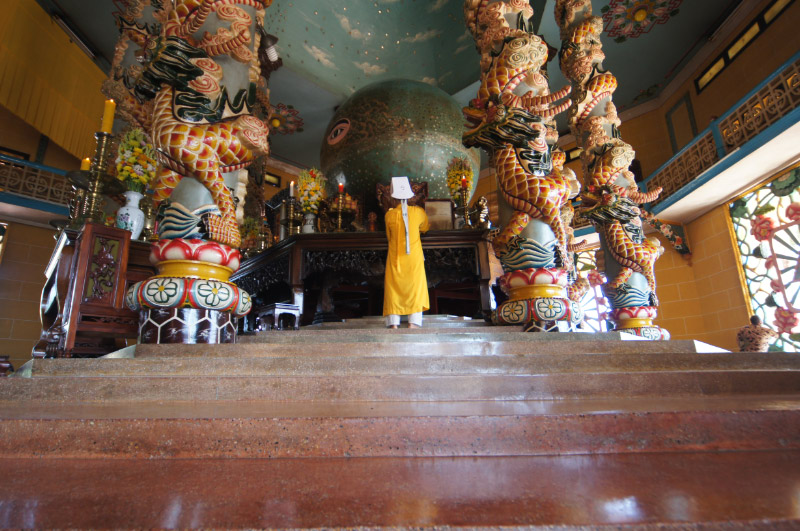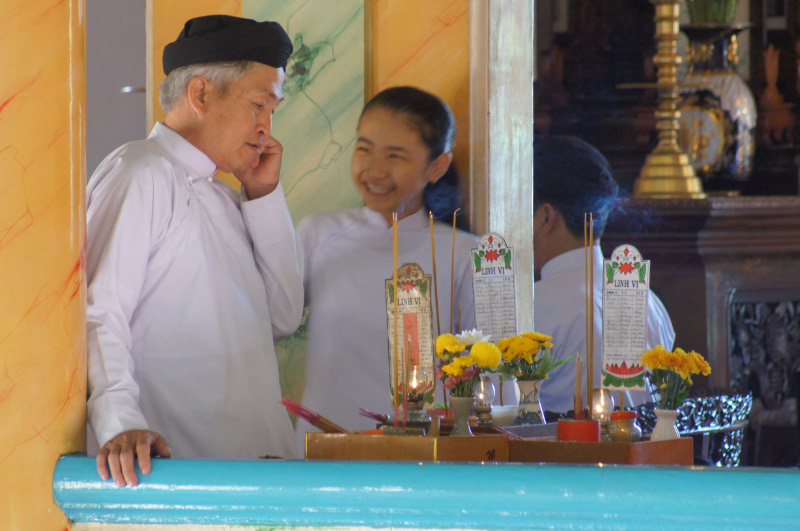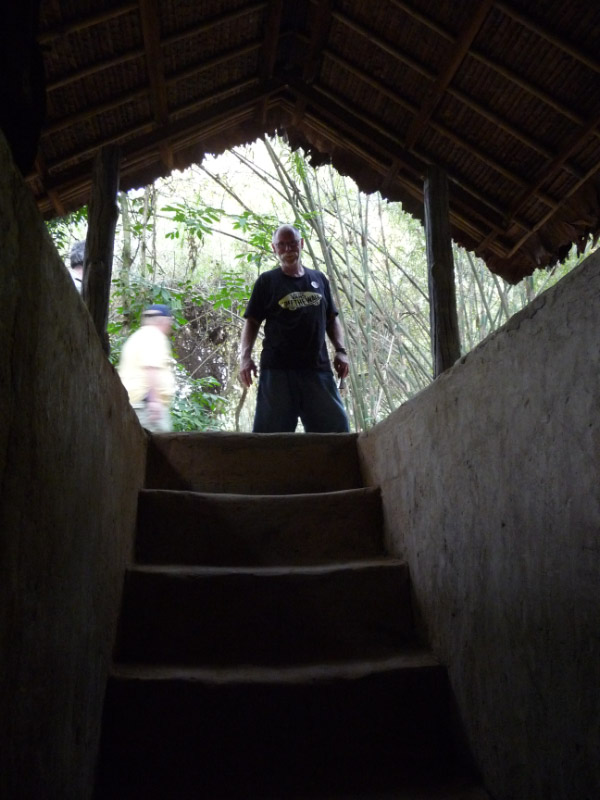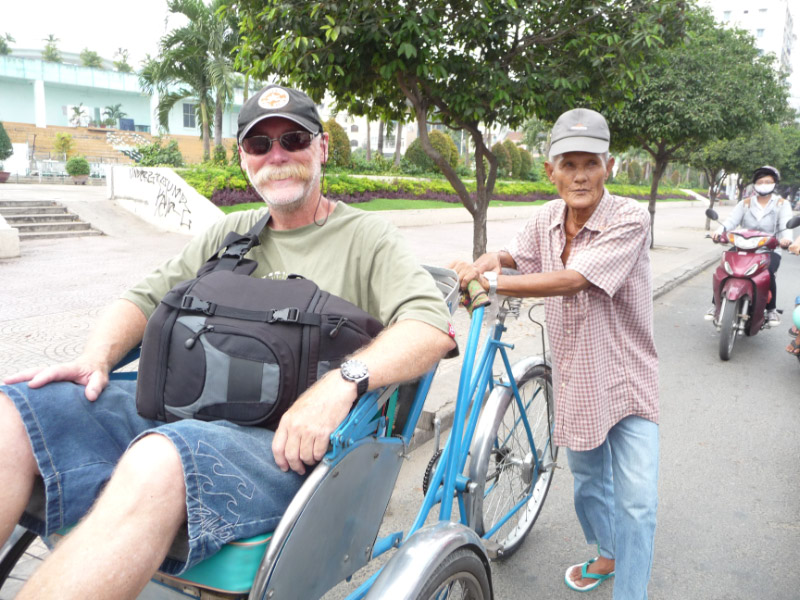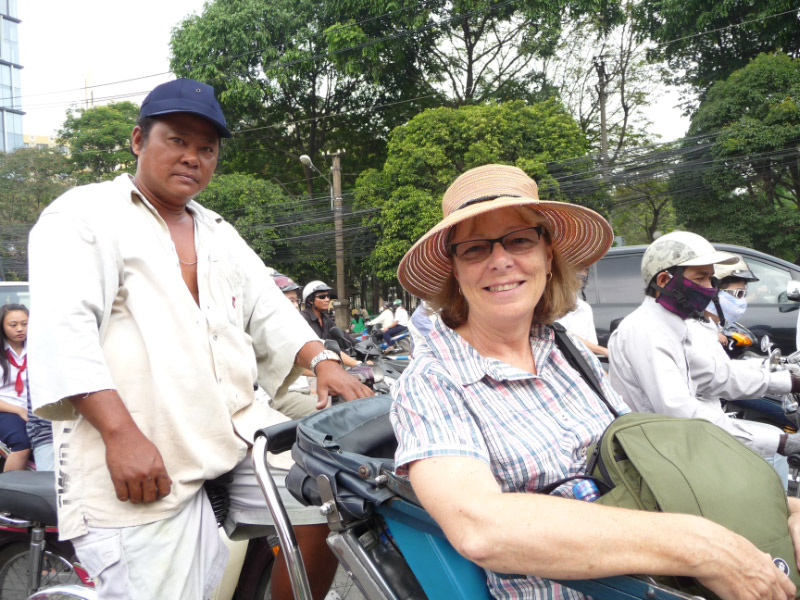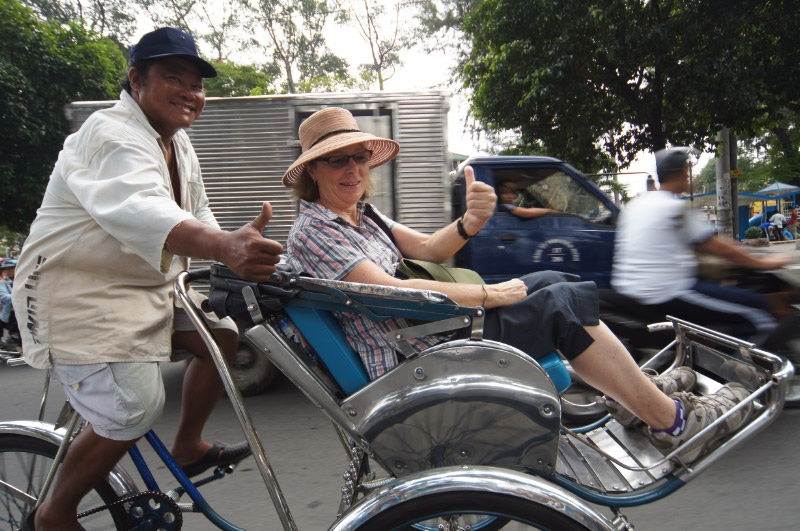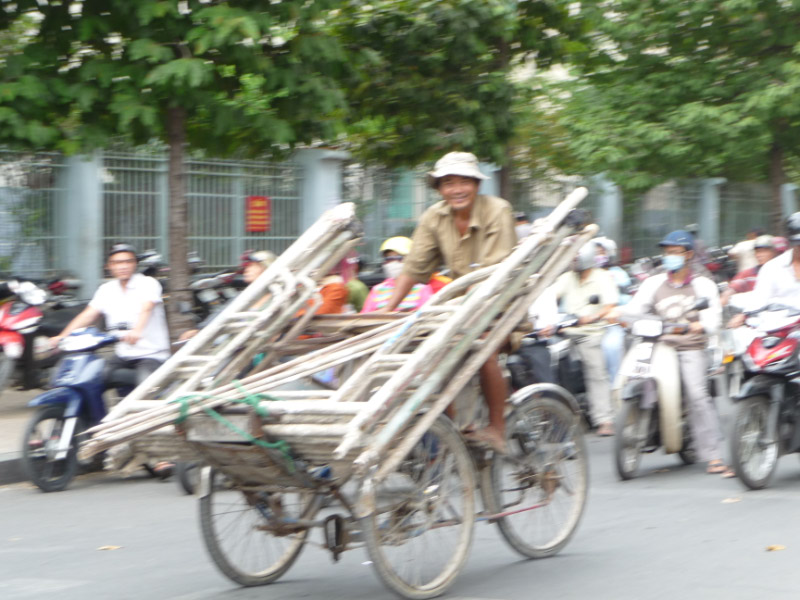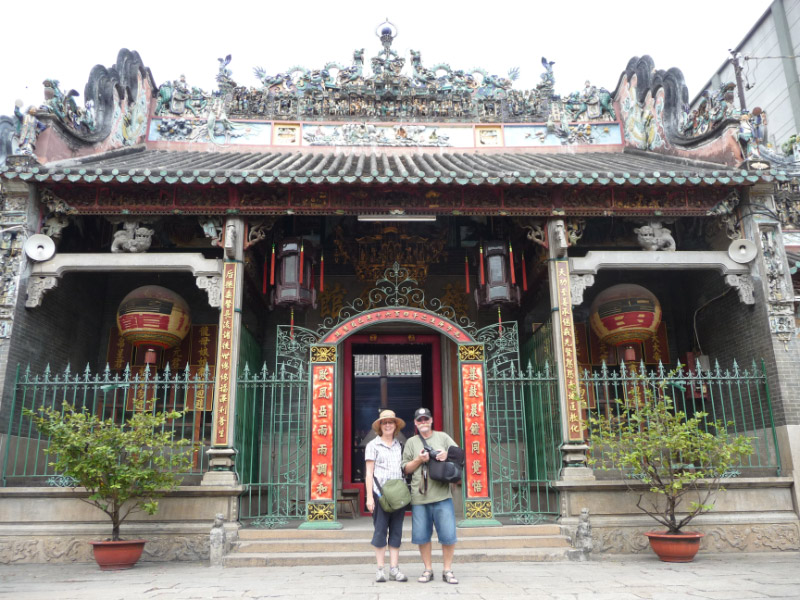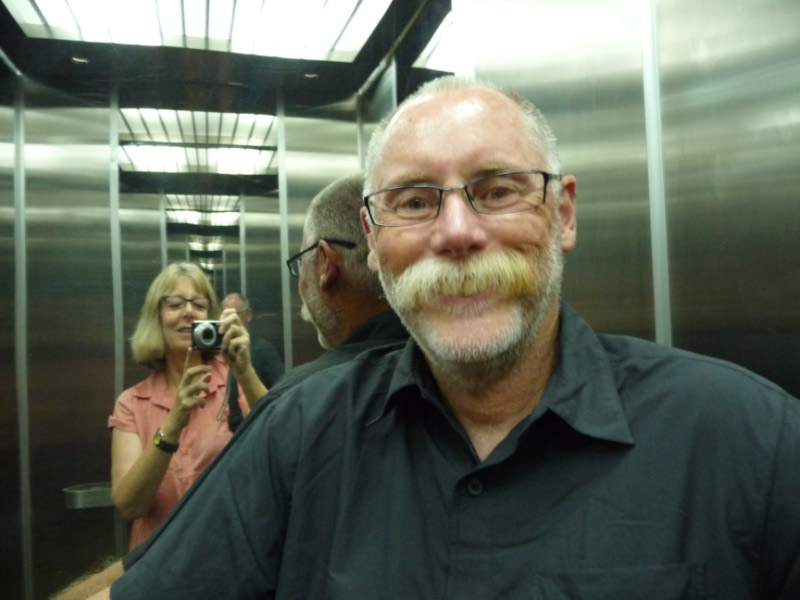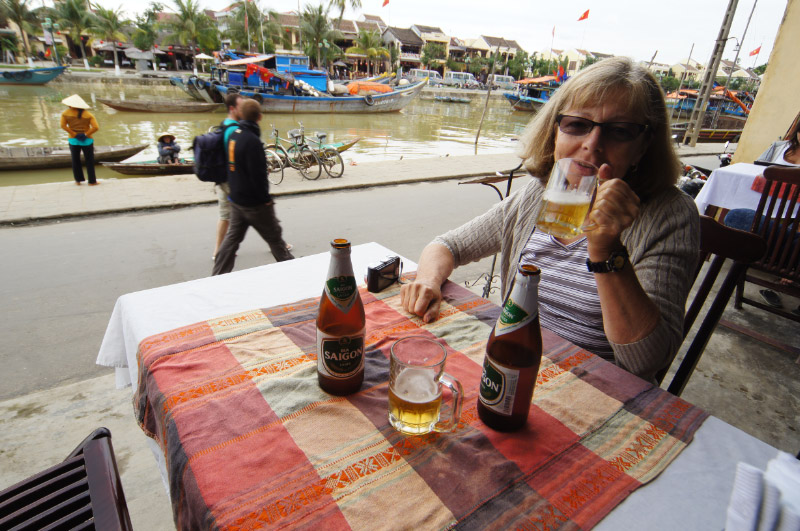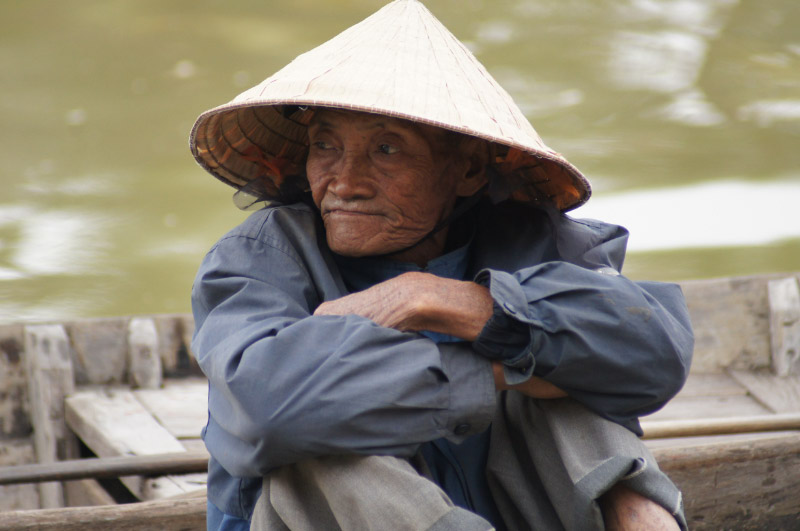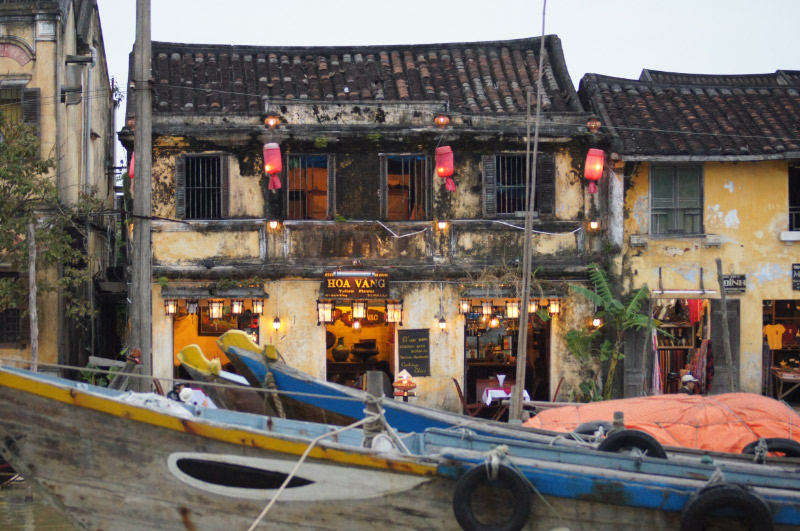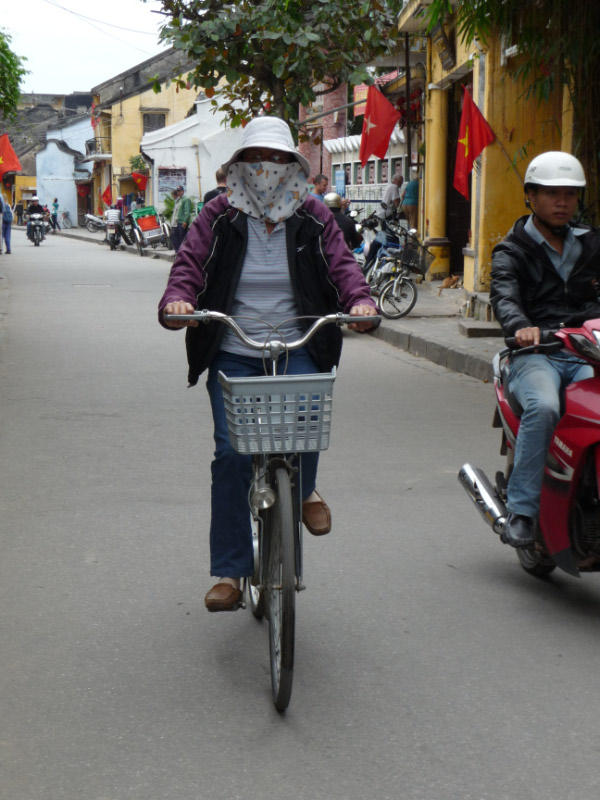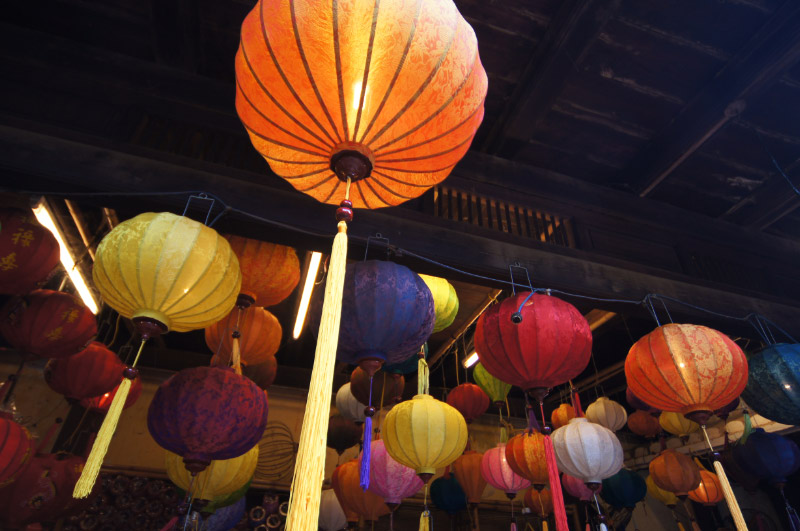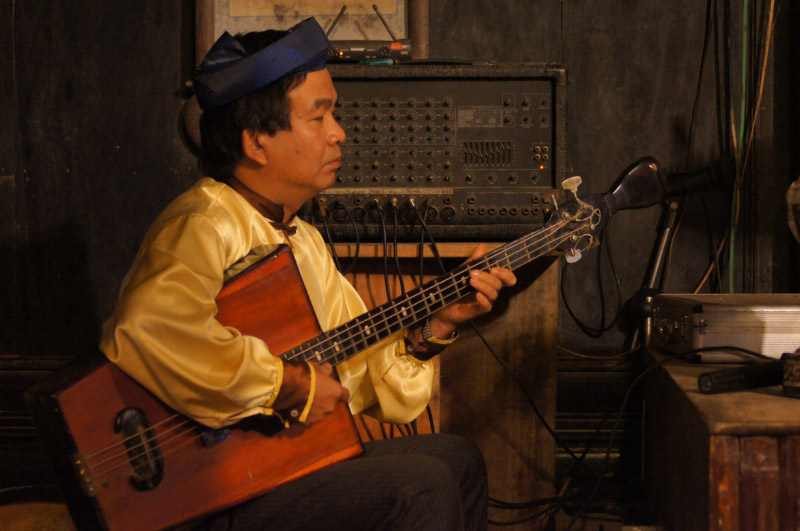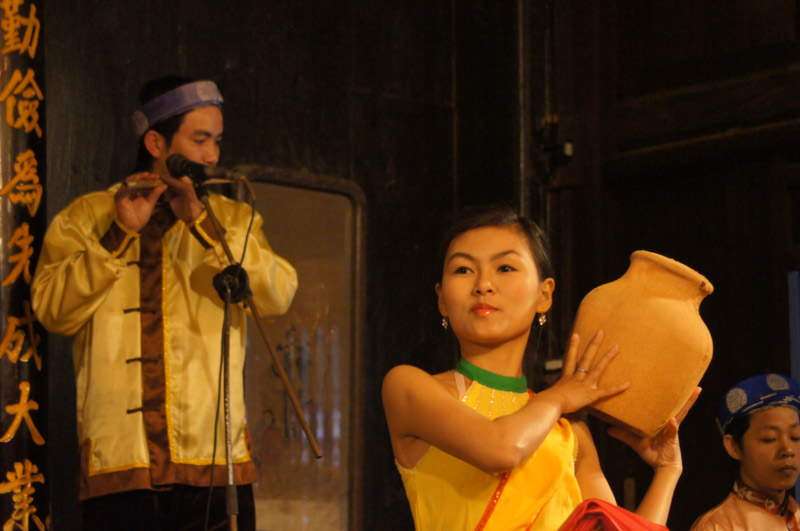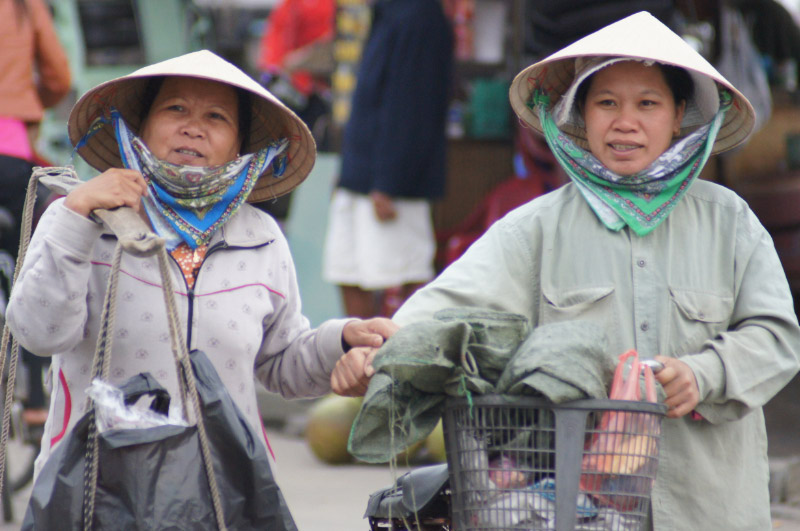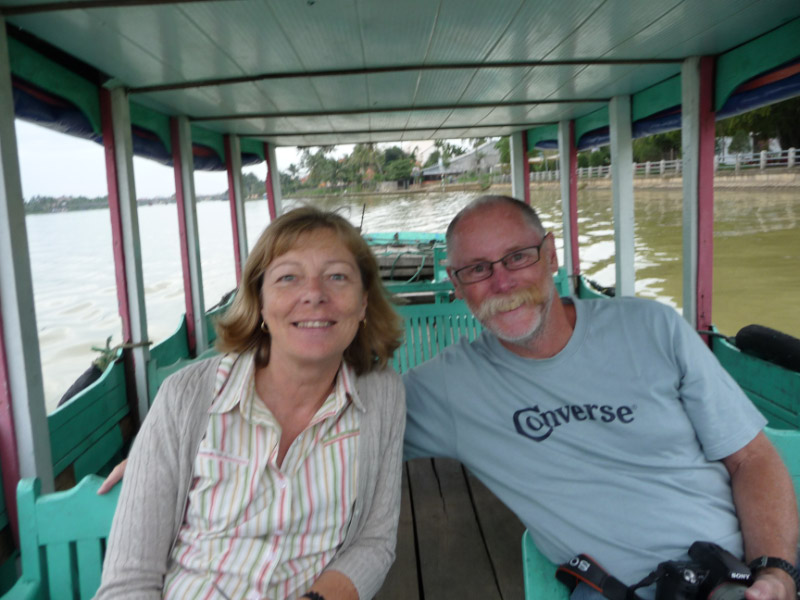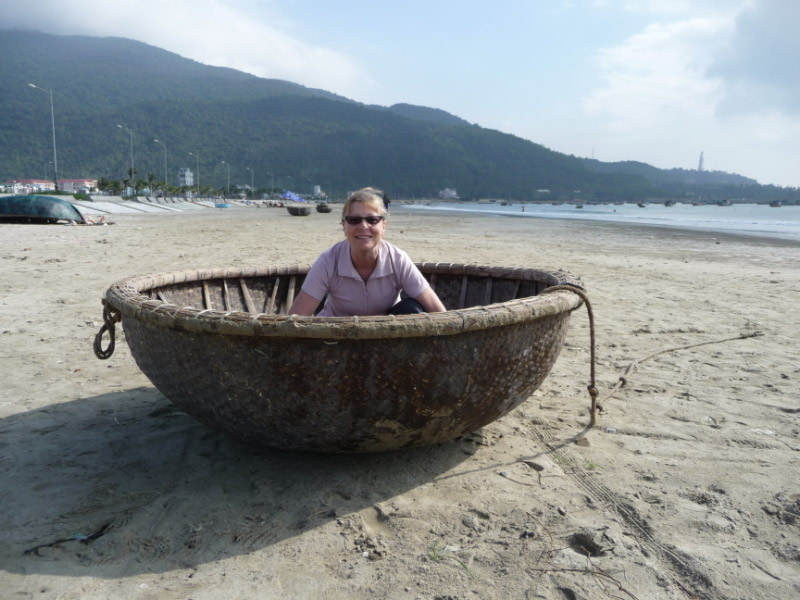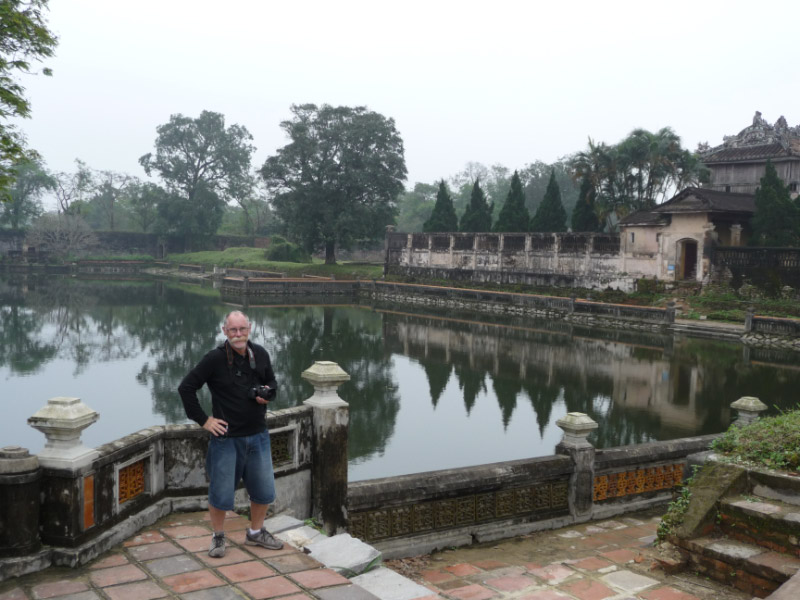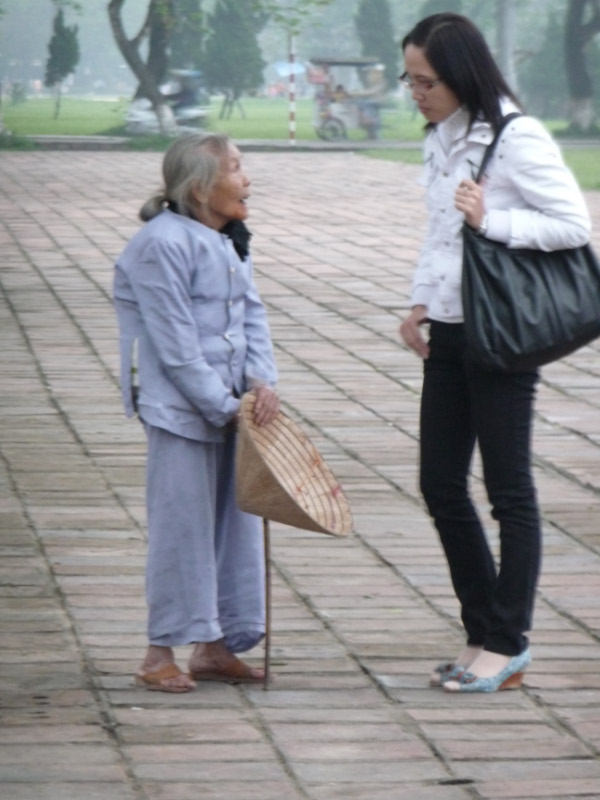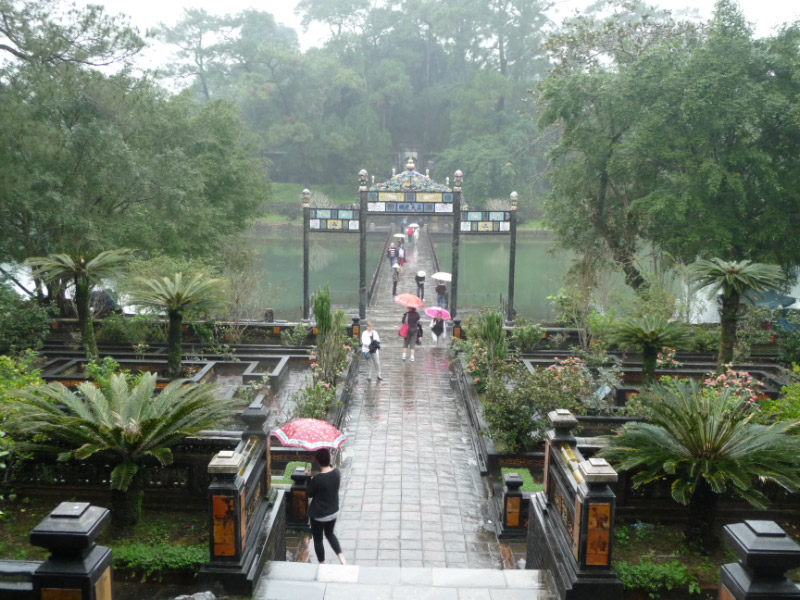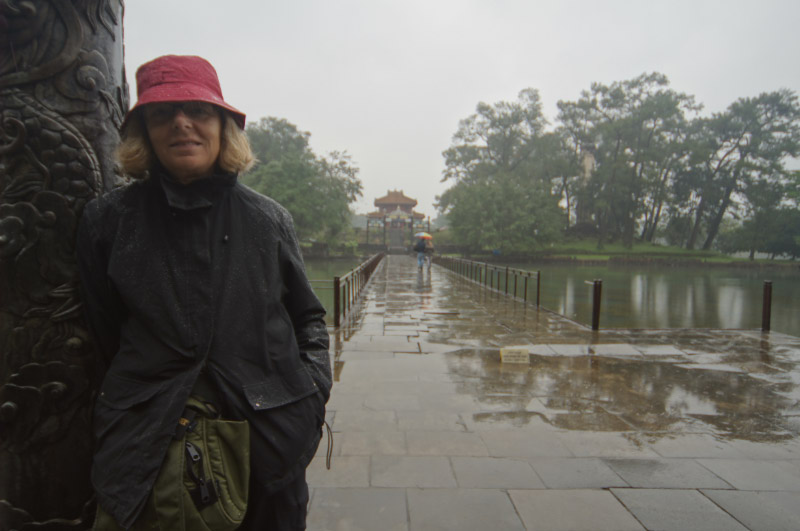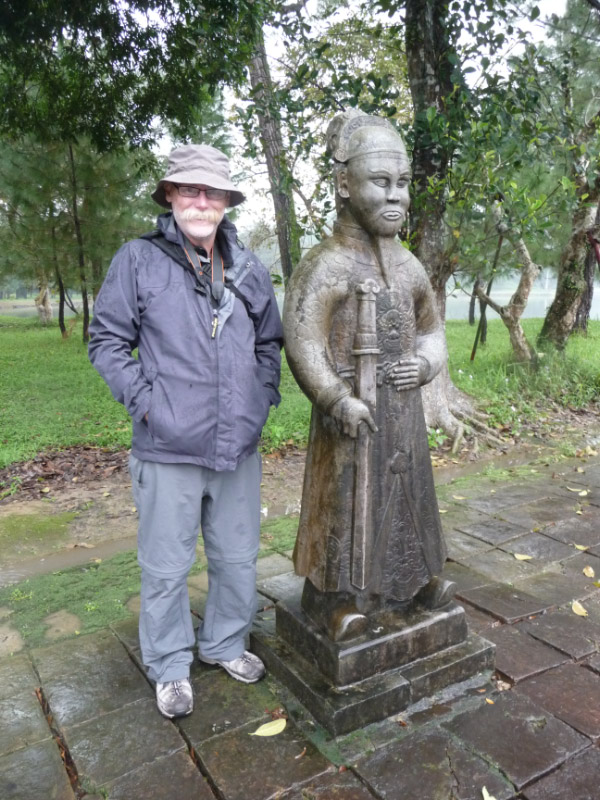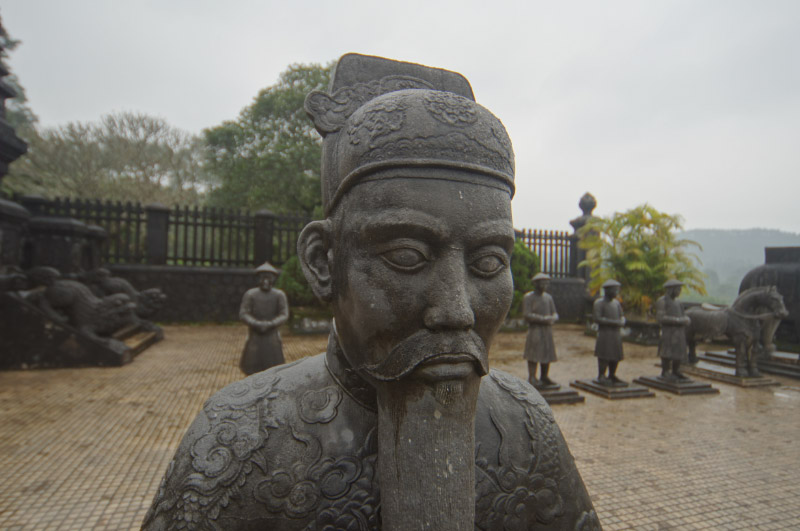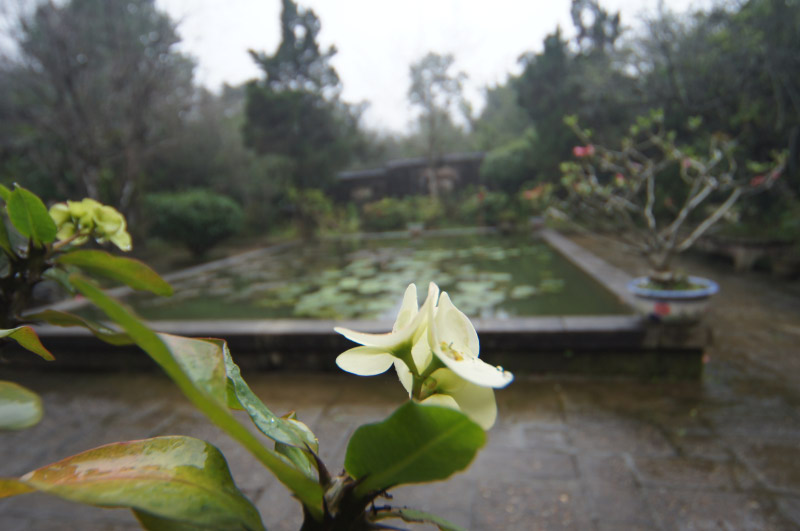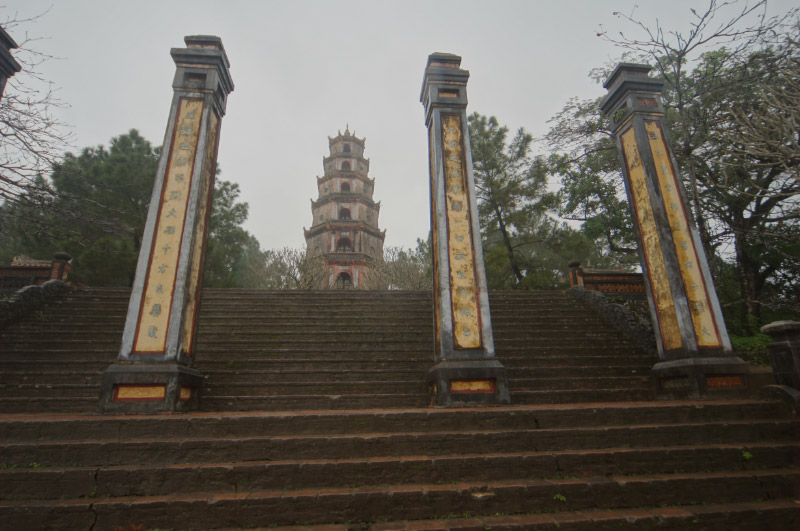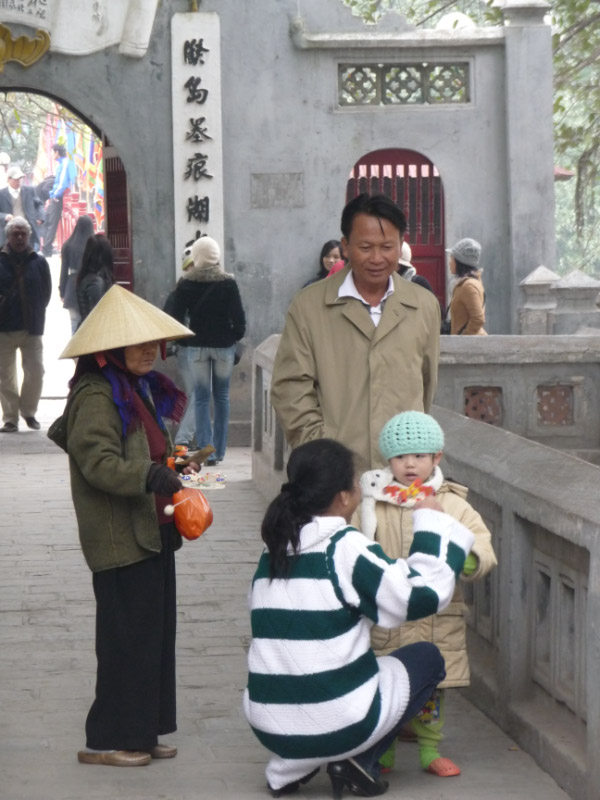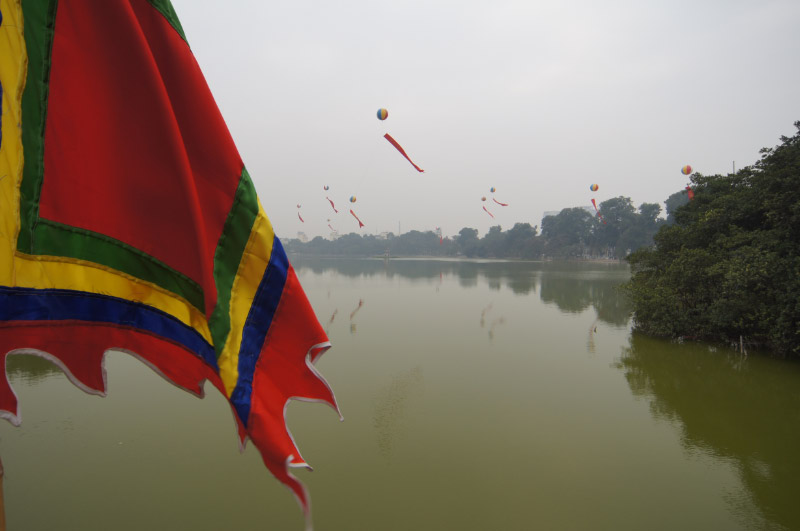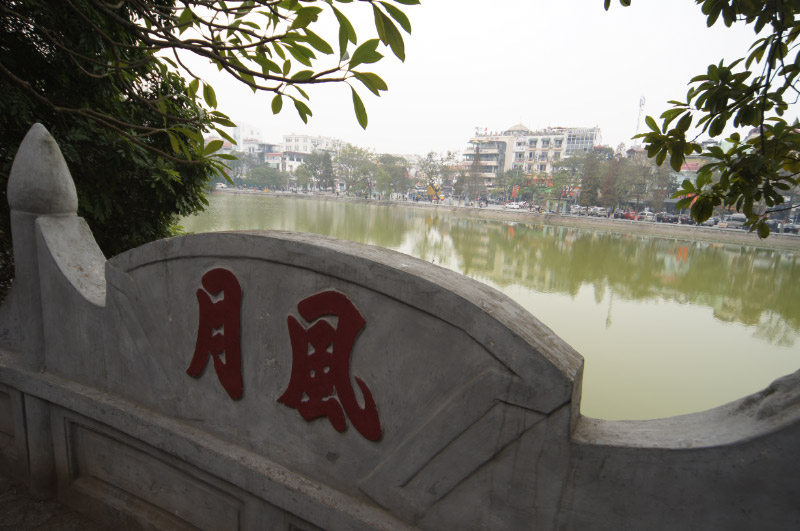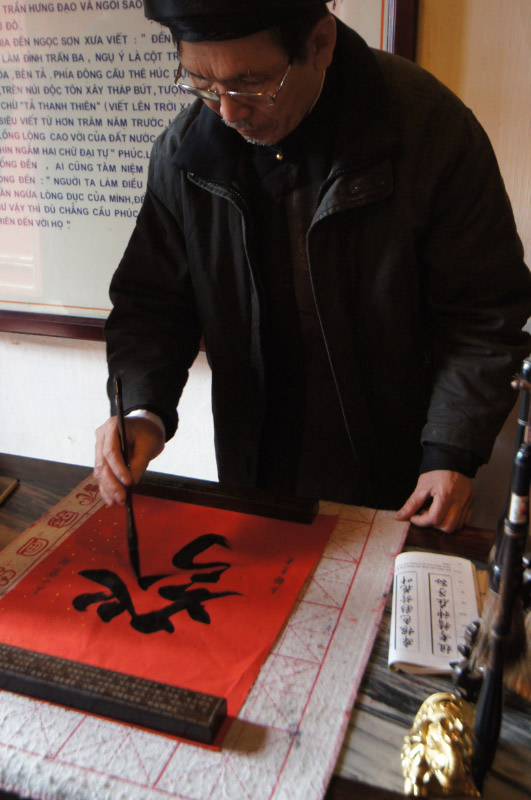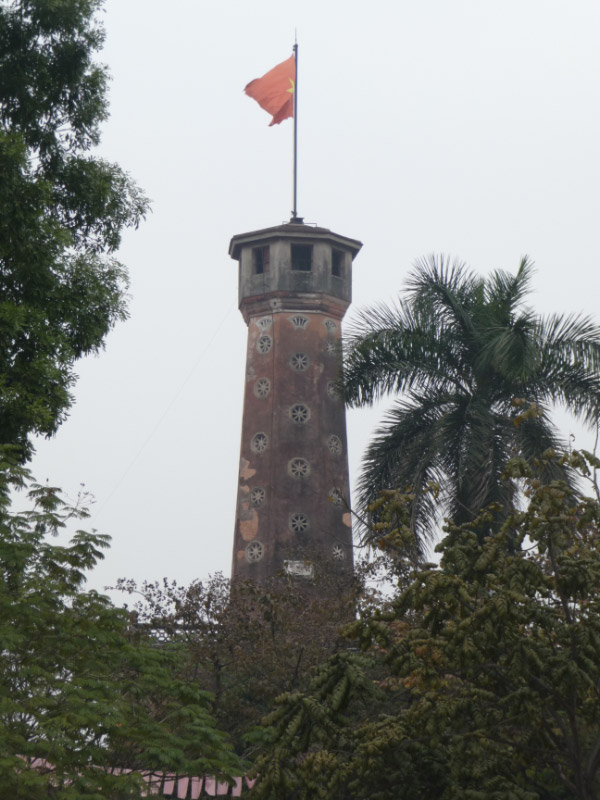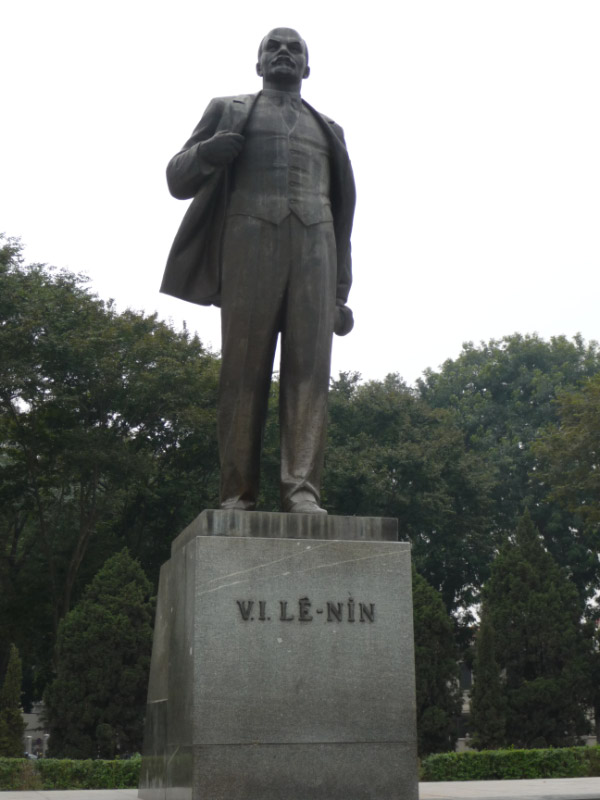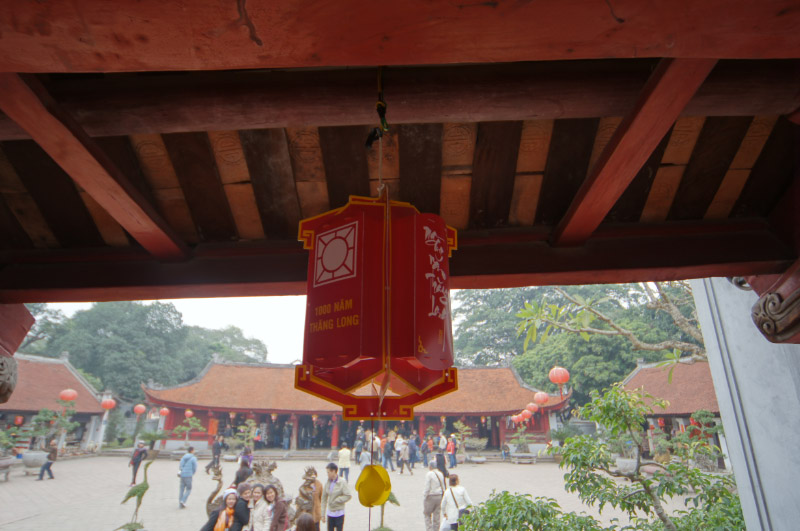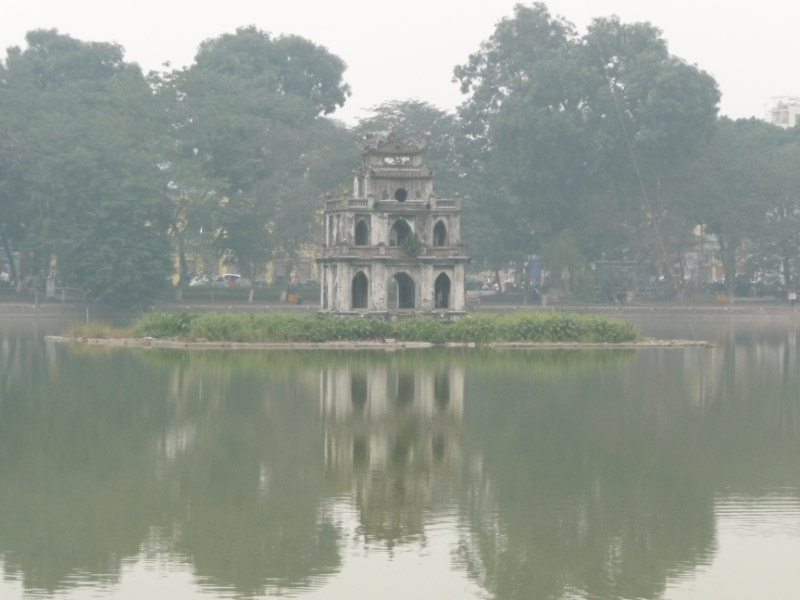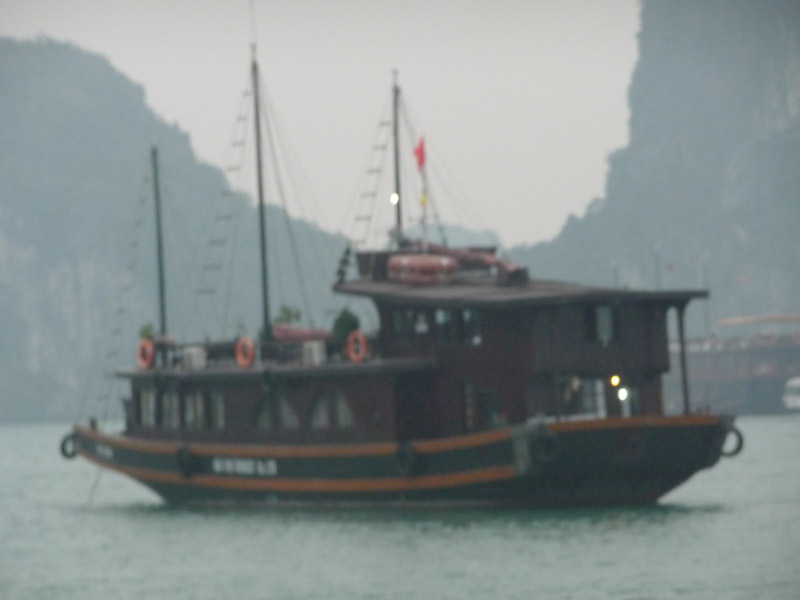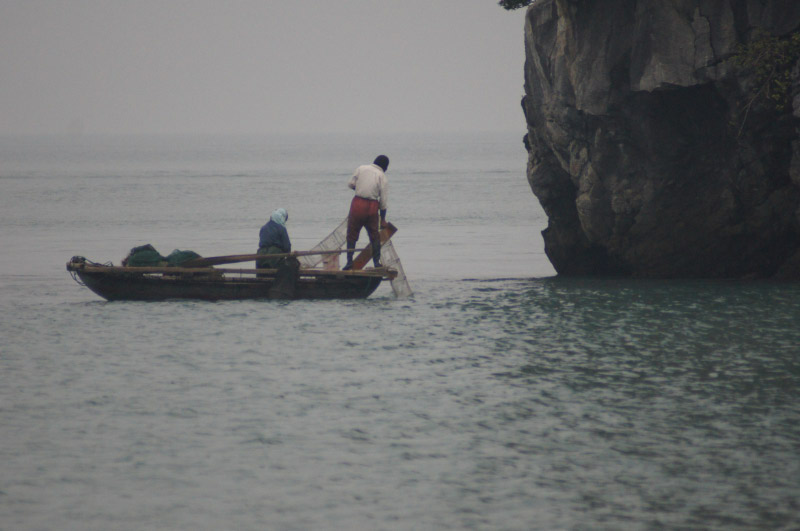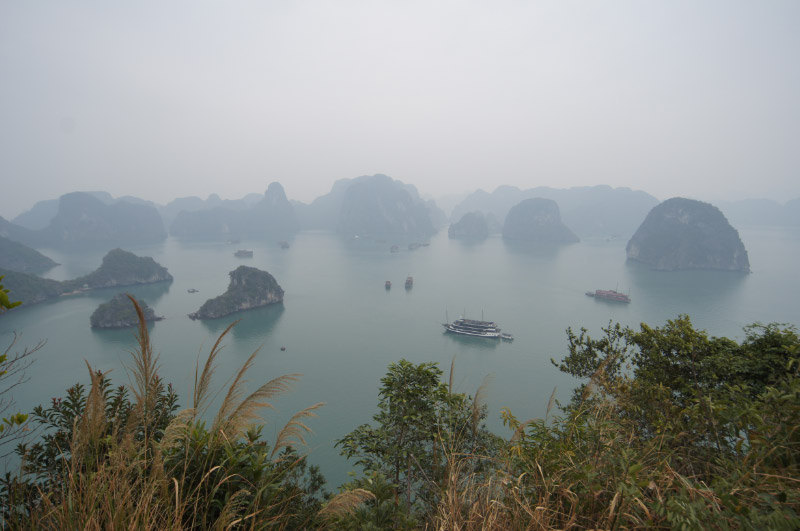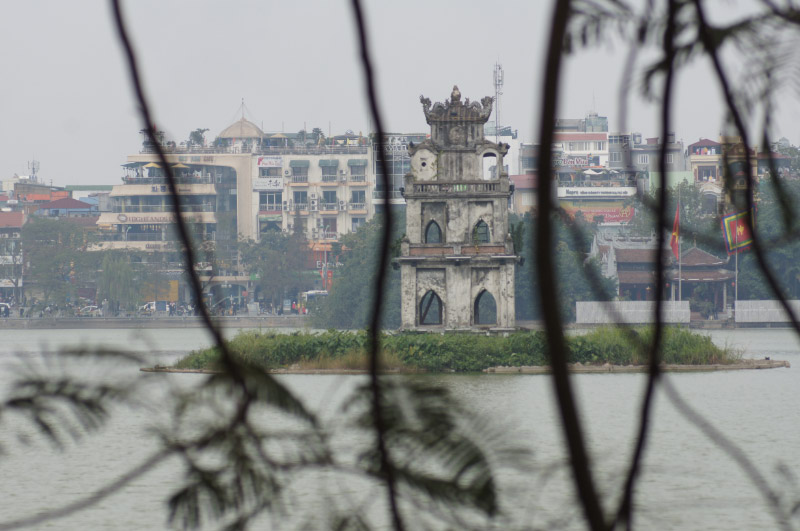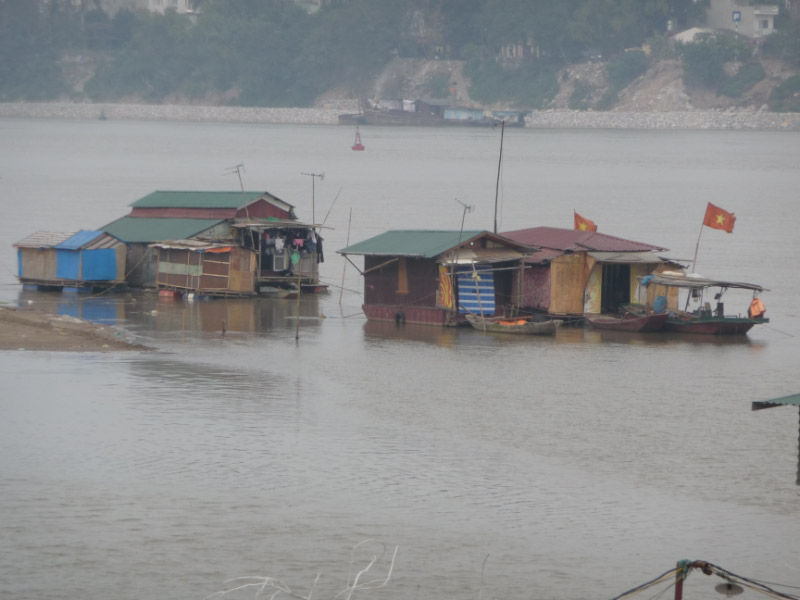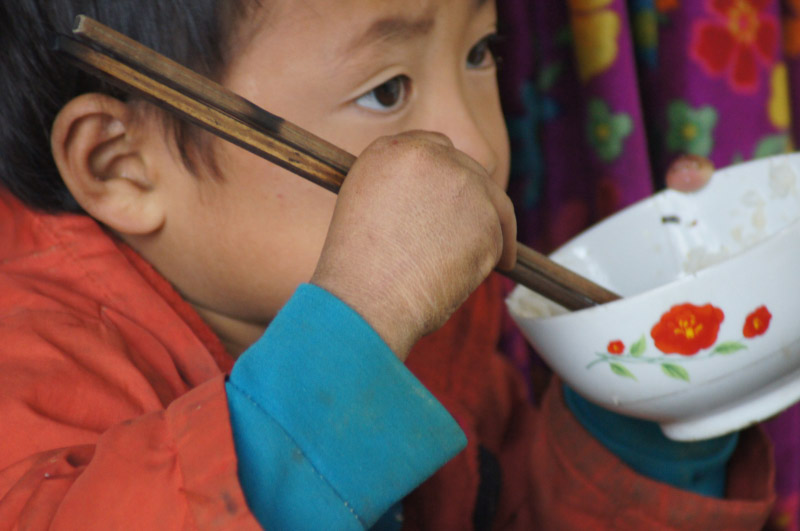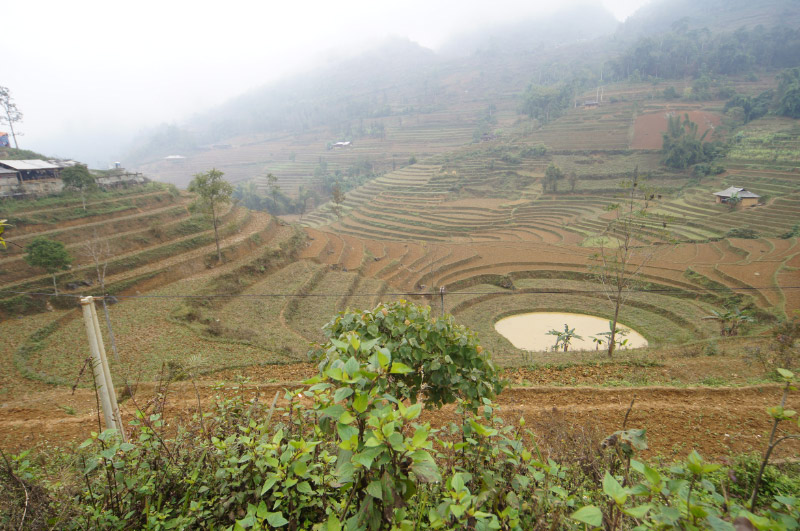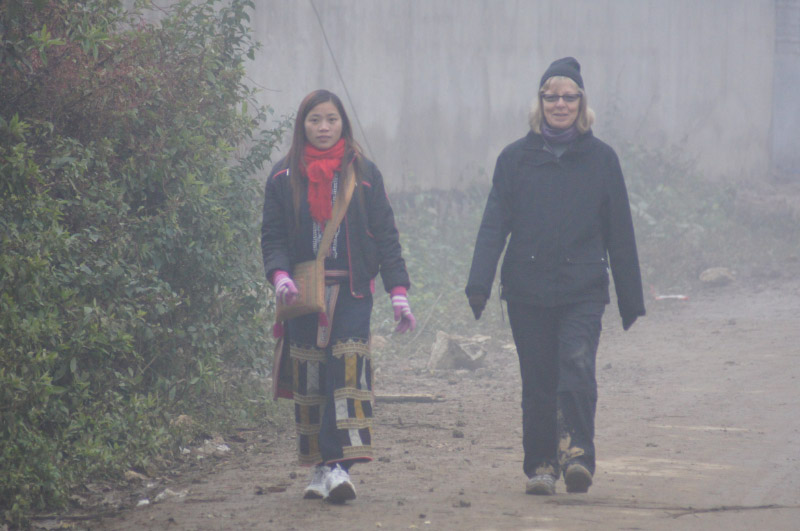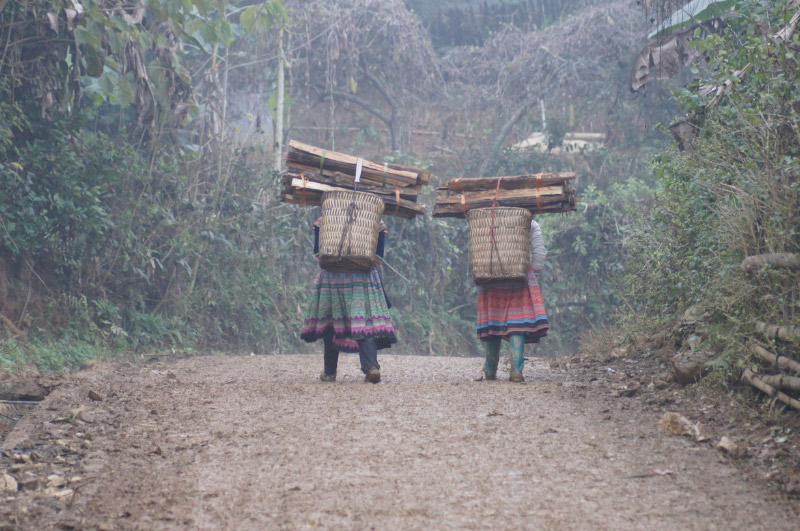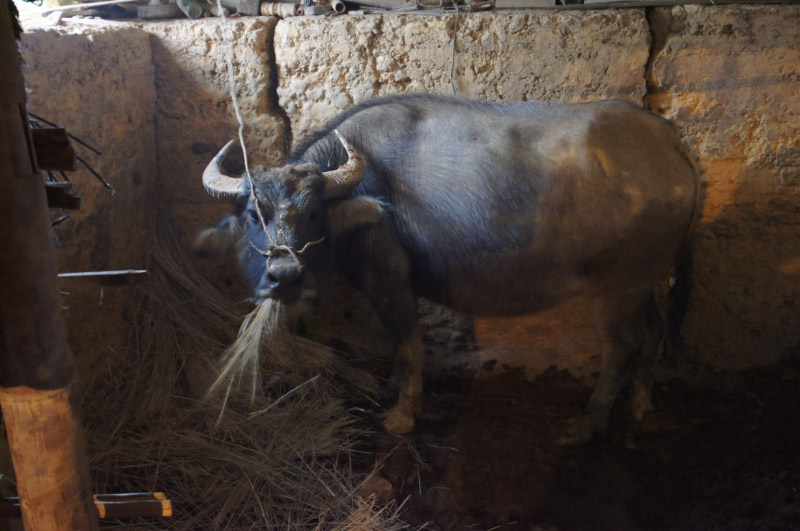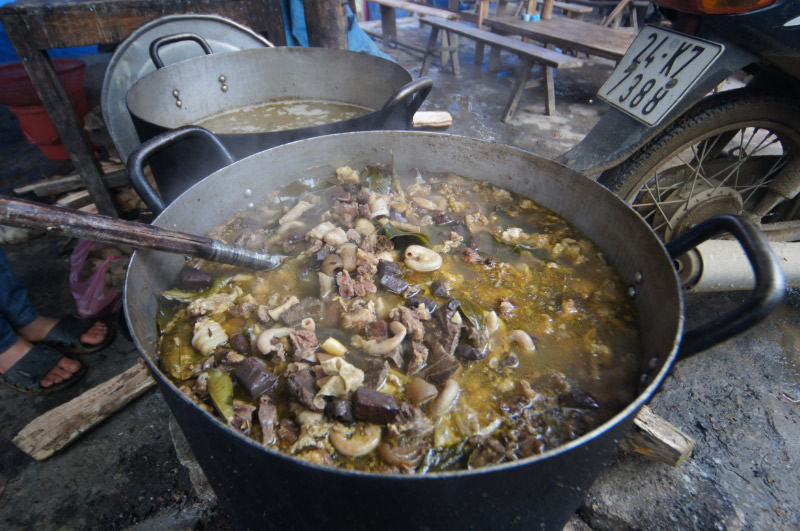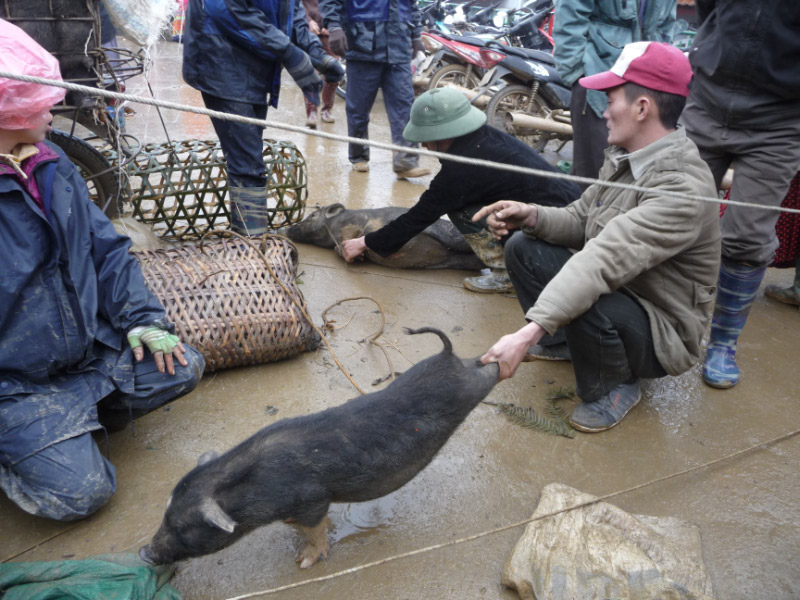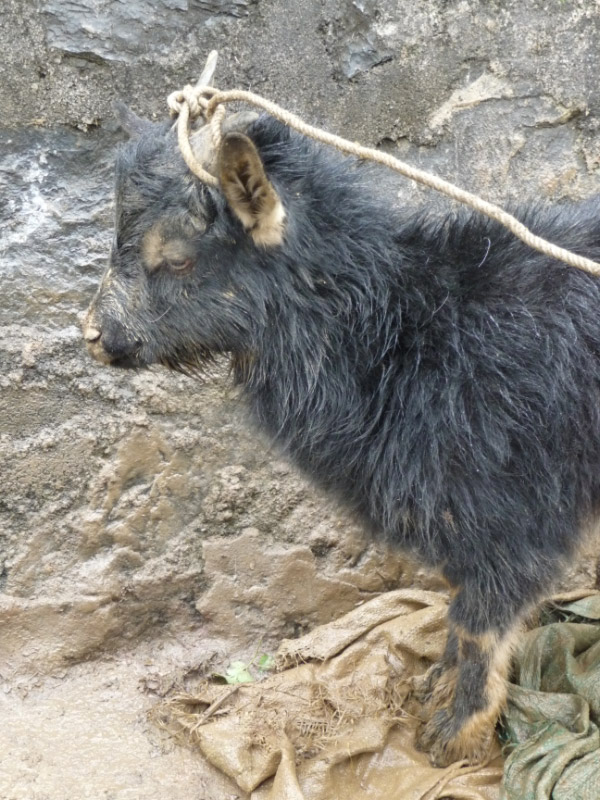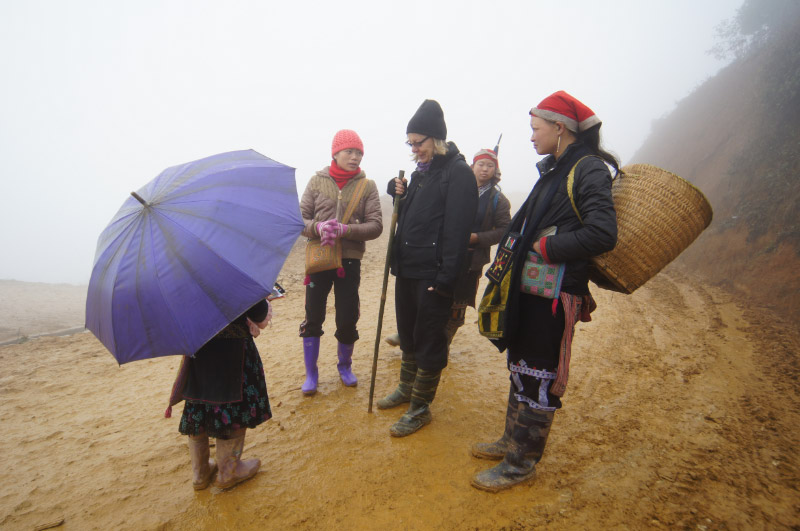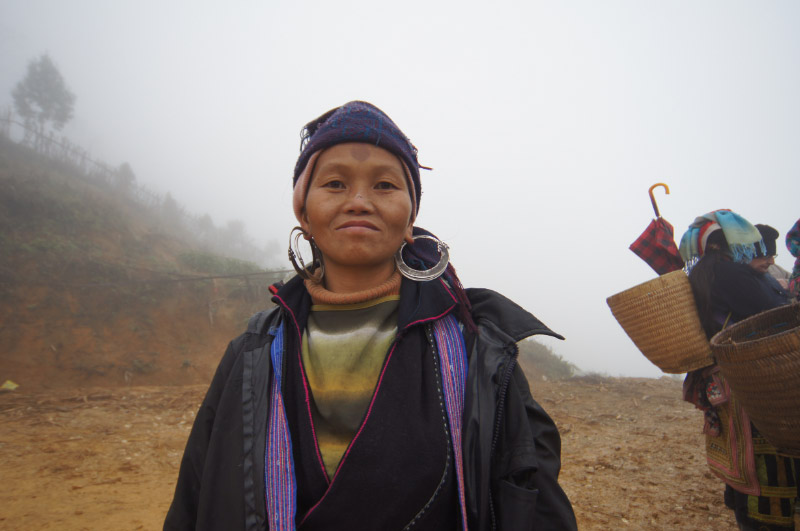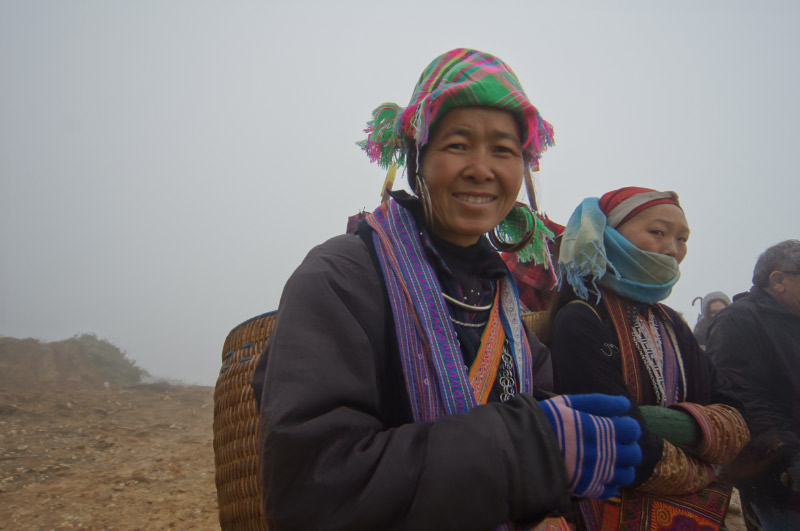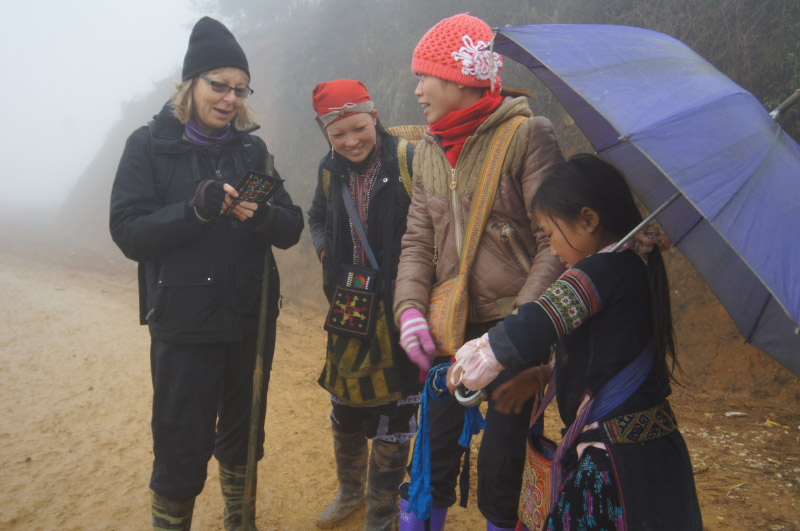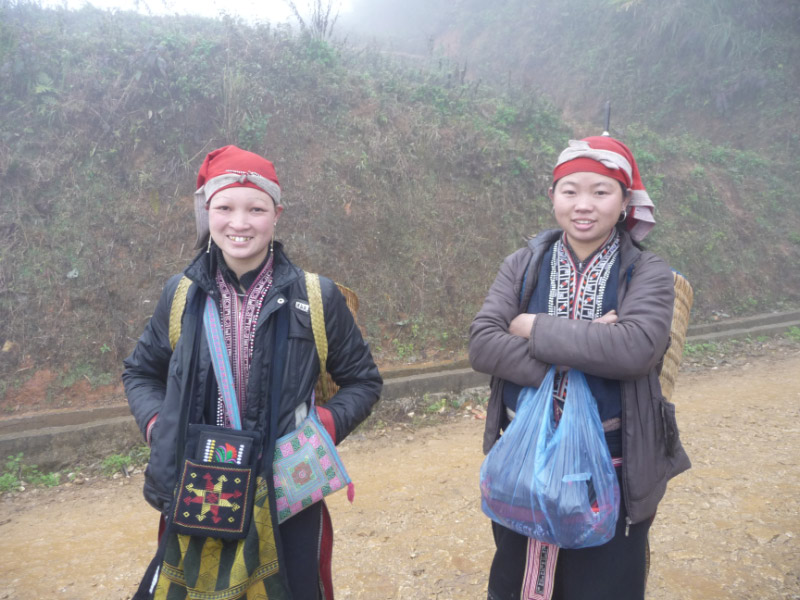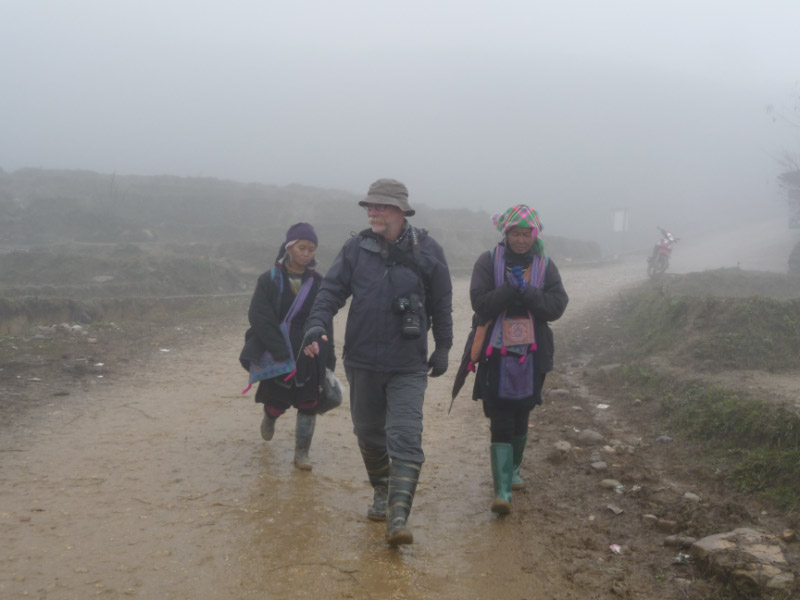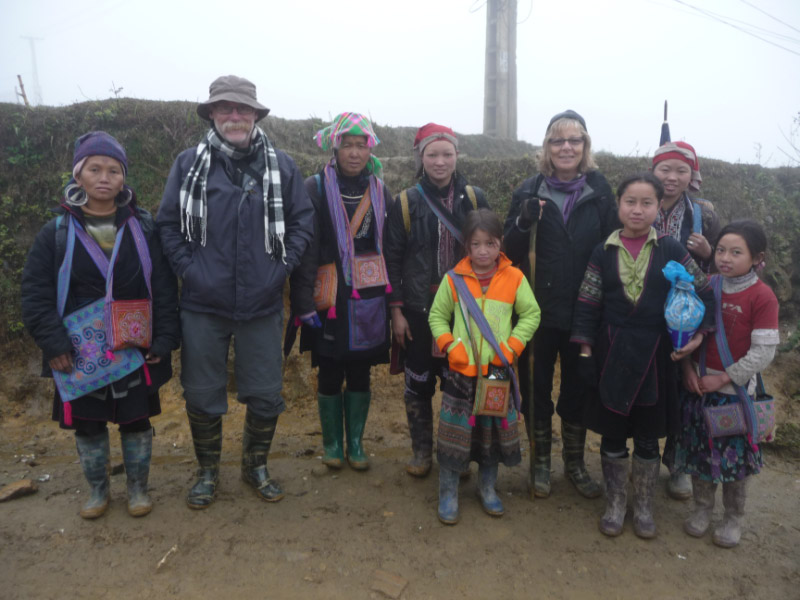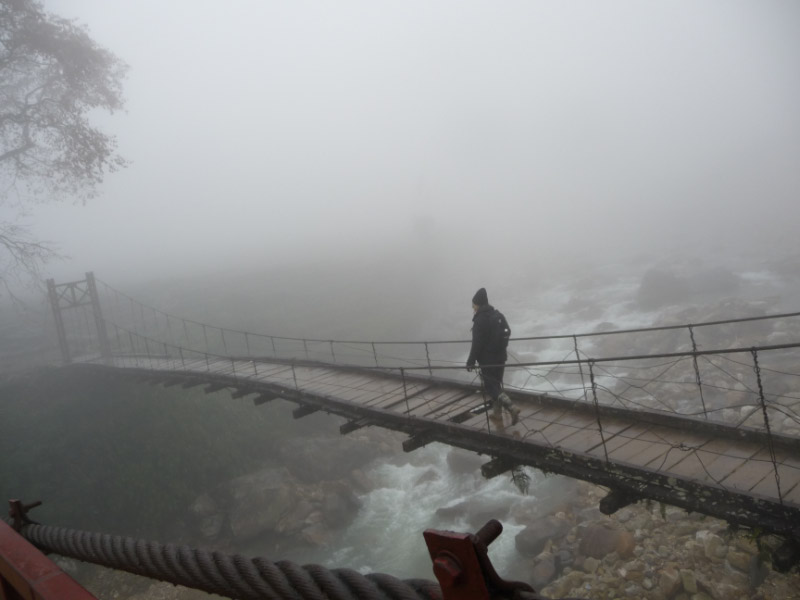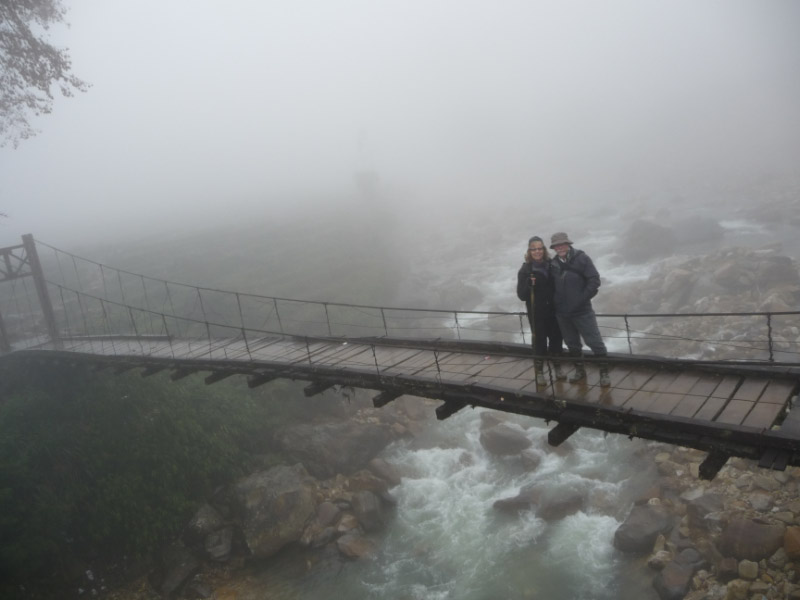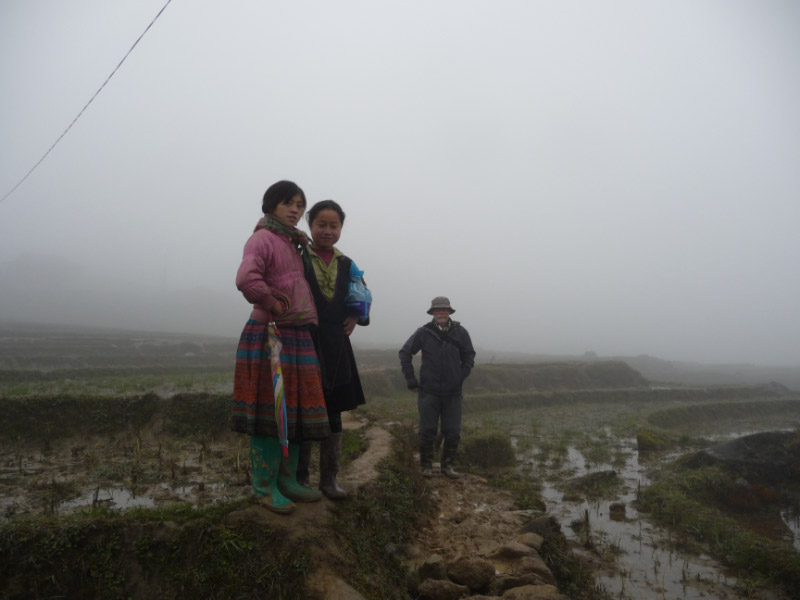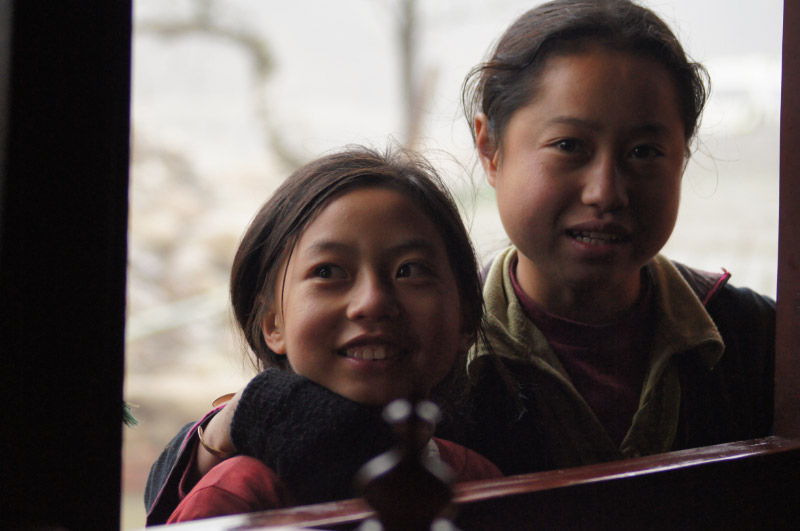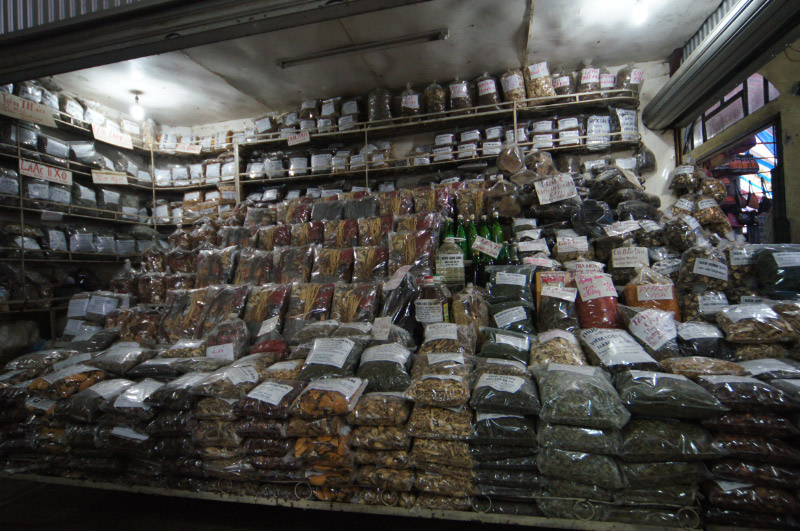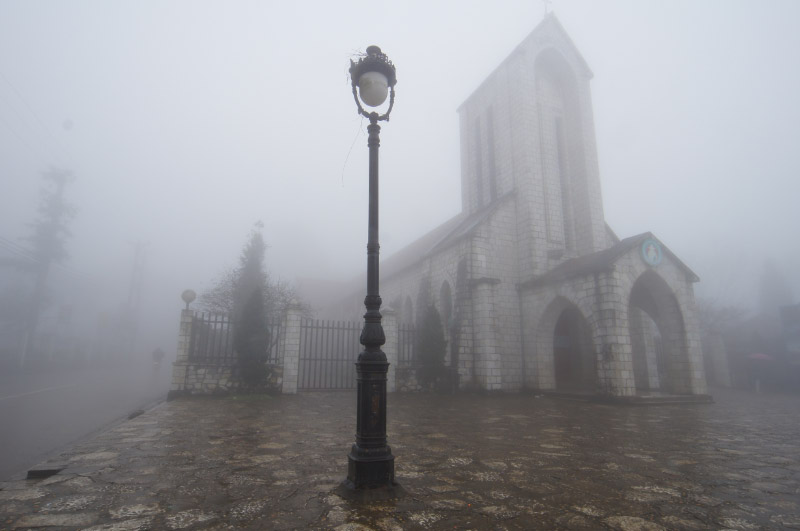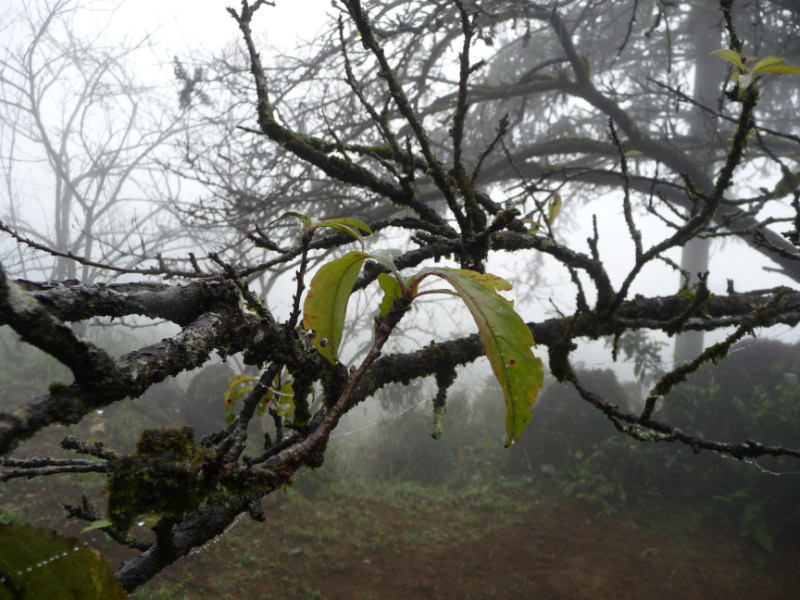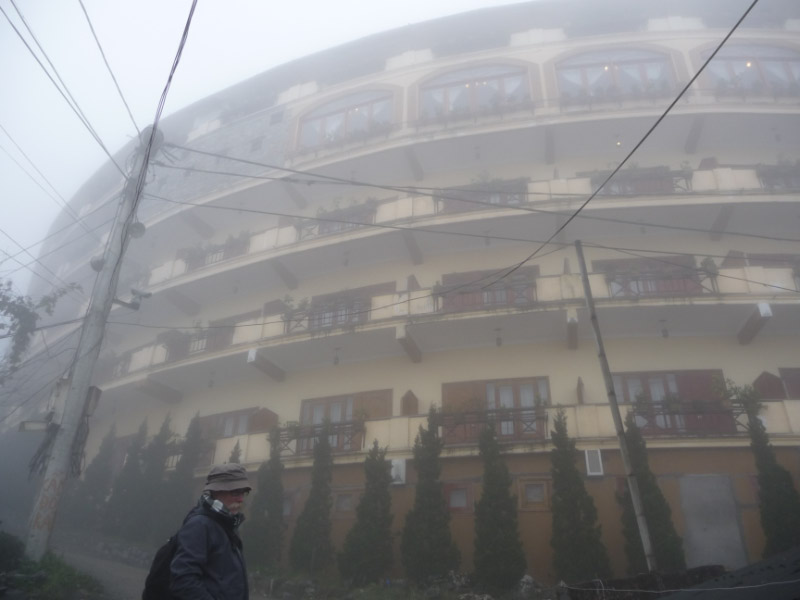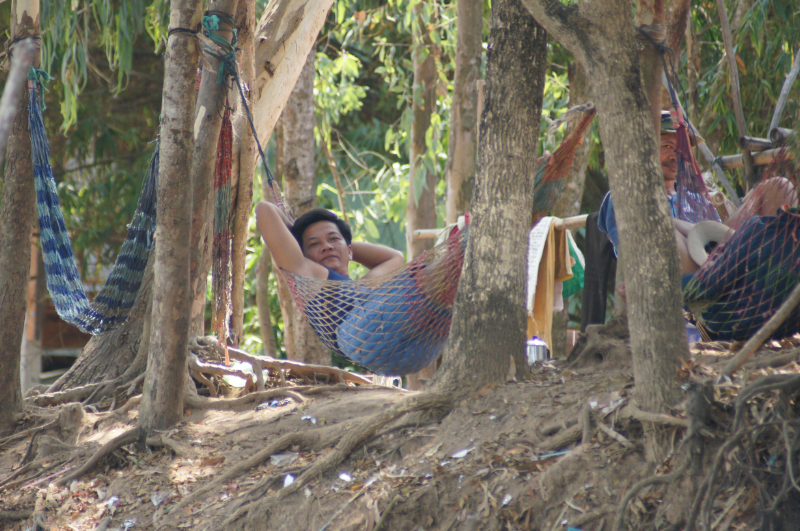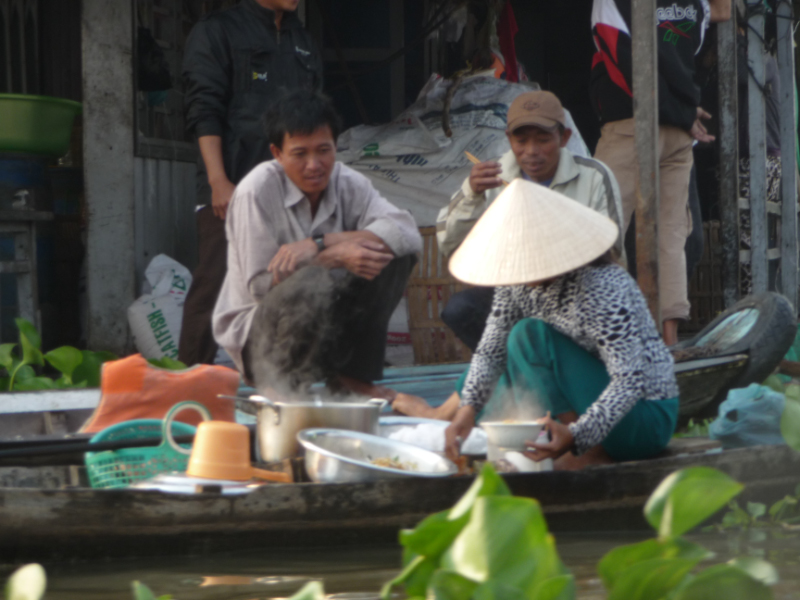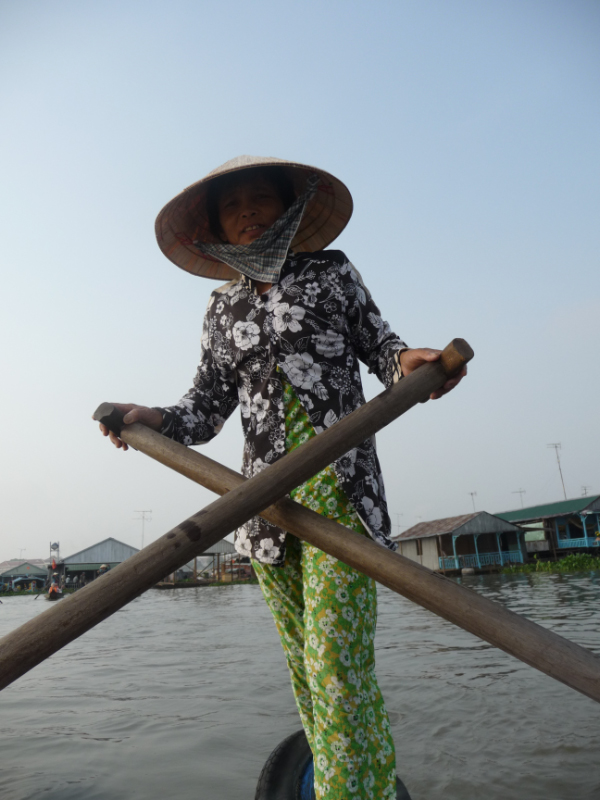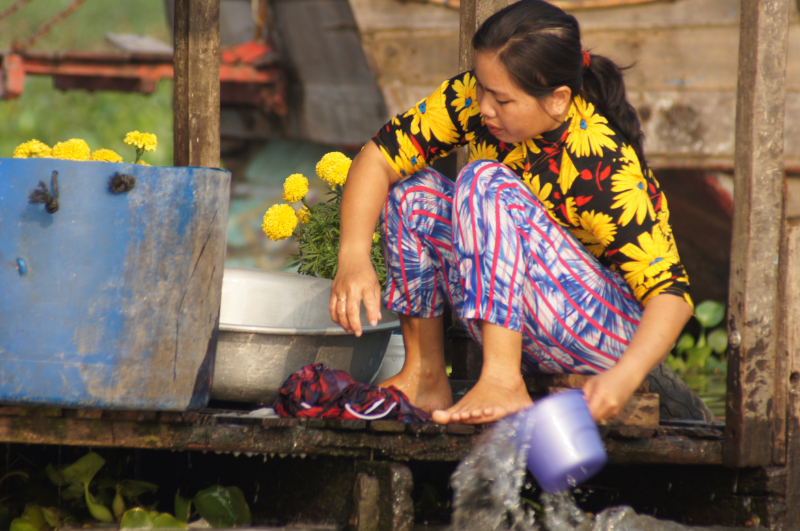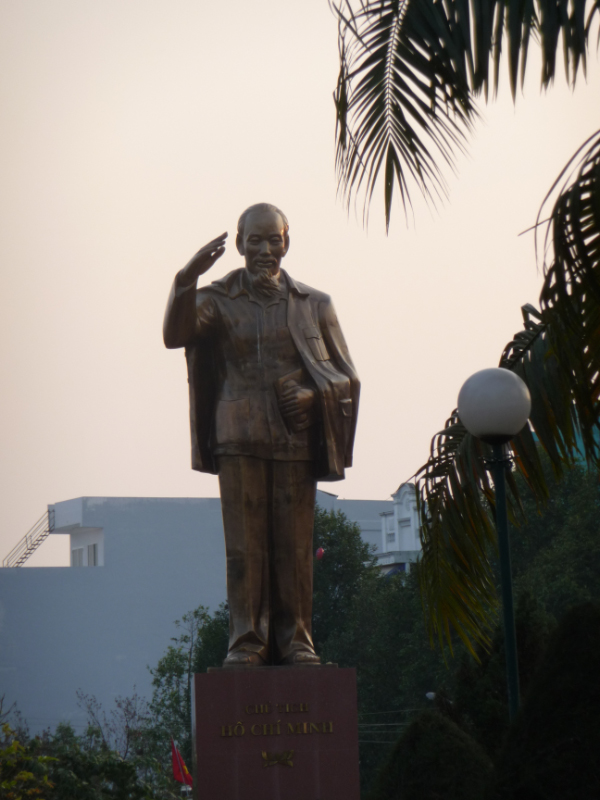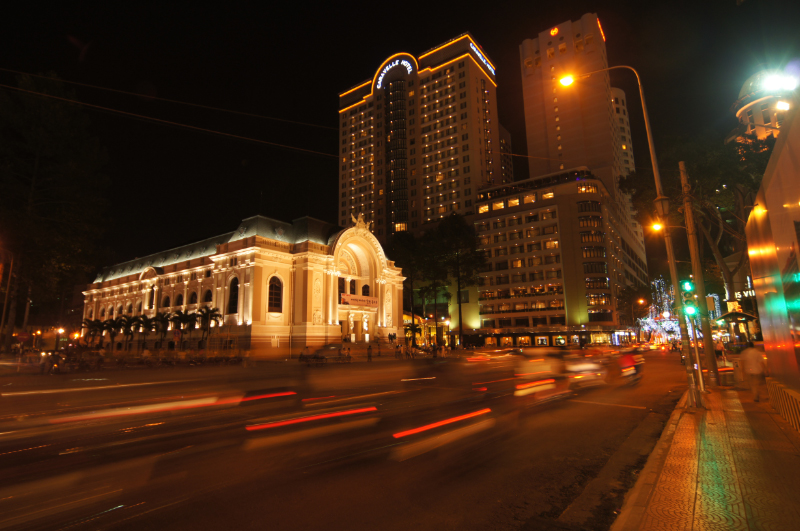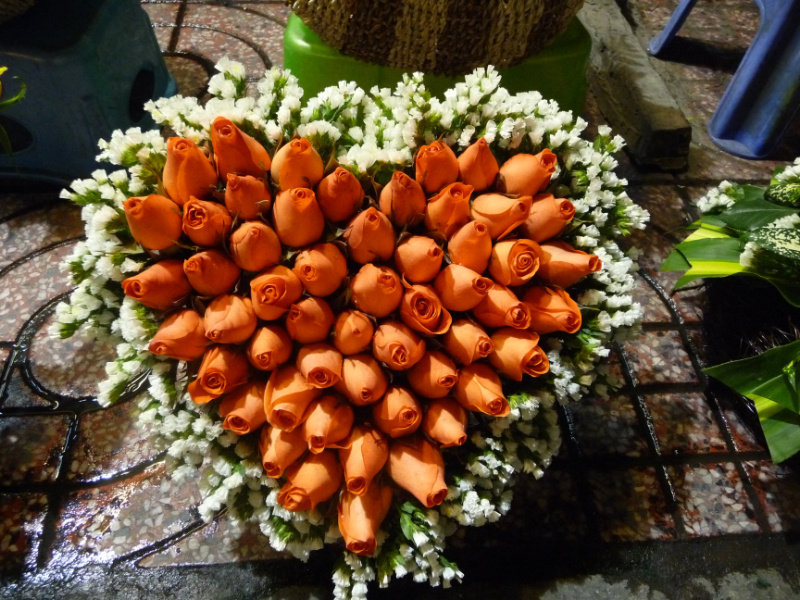Ho Chi Minh City
The city of scooters – one statistic is one scooter for every two people who live in Saigon – and it feels like it. Crossing the road is a challenge that brings the greatest level of trust between you and every man on the road heading down towards you. Don’t dare waver from the line you take to cross the road, and believe in the enormous skill of the Vietnameses scooterers!
The city of food – street stalls, market stalls, coffee shops and up market restaurants – the food is always good and very inexpensive.
The city of smiles – just one smile brings another. The people are so friendly and ready to return your smile.
Day trip to Cao Dai temple and Cu Chi tunnels
Cao Dai is a 20th century Vietnamese religion drawn from Buddhism, Catholic & Confucian elements. We visited the largest temple, where we witnessed part of their “Mass” which is celebrated four times daily.
We then visited the Cu Chi tunnels, built during the Vietnam war by local & Viet Cong guerillas. War is never pretty and the conditions and terms of engagement in this part of Vietnam were certainly tough.
Saigon – Cyclo & War Remnants
We decided to try a cyclo tour in Saigon and happily negotiated 150,000 VND each for an hour. Our cyclo friends rode us miles away – funny how it took another hour to get us back to Le Loi street. We learnt a lesson at the cost of about $AUD30 for 2 hours entertainment.
Following our Cyclo tour we visited the War Remnants Museum. See Bruce’s comments at moustache.com.au.
Hoi An
Hoi An in Central Vietnam was a trading port for many centuries until the river was silted up in the 19th century, which nearly destroyed the town. Buildings of the Chinese, Japanese and European traders were so well preserved that it was proclaimed a Word Heritage site and is now a popular destination for domestic and international tourists.
Hue
We drove from Hoi An to Hue, along the coast to Danang, where the amount of beachside development overwhelmed us. Is this the new Bali? From Danang we took the Hai Van tunnel and then through rice fields to Hue.
Hue is the intellectual, cultural and spiritual heart of Vietnam. It was the home of the Nguyen Dynasty who ruled Vietnam from 1802 until Bao Dia’s abdication in 1945. Much of this ruling was as puppets to the French who invaded in 1858.
Like the rest of the world, Vietnam has unseasonal weather, very much colder than normal. Look for us in coats and hats as we tour the tombs.
Hanoi
We arrived in a misty and cool Hanoi and started to wonder how cold Sapa will really be?
Our hotel booking ran into hot water problems and we were relocated to another hotel across the road with a multitude of apologies.
We are in the midst of the old city – busy with all forms of two wheeler transports. There are numerous vendors – food, clothing and souvenirs, and a heap of places to eat, ranging from street stalls to up-market French restaurants. It is a busy place.
Highlights include the Temple of Literacy (Vietnam’s oldest university dating back to 11th century) and Ho Chi Min’s mausoleum and stilt house.
Halong Bay
We escaped from Hanoi to Halong Bay for a night on the Star Victory 02. Halong Bay, like Hanoi, was very misty so it was a surreal trip out on the water in an almost monochrome light. Highlights were the Secret Cave and a climb to the Pagoda, but best of all was an escape from busy Hanoi for 24 hours.
Life in Hanoi
Hanoi old city is as crazy as Saigon – full of motor bikes and scooters that carry anything and everything: wardrobes; cumquat trees; families of 5; bamboo poles; rubbish for recycling; deliveries to and from the market, both produce and other items. There are footpaths, but they are used to park the motorbikes and accommodate the street-side food stalls, so you are forced to negotiate the traffic on the streets as you walk from one place to another.
There is also a plethora of street vendors carrying the two baskets (which might contain a hot BBQ or steaming pot as well as the food to cook, the plates and chopsticks to serve and the stools to sit on as well as a bowl and water to wash everything up) or pushing trolleys that are similarly set up.
Despite the cold weather in January, a lot of life exists on the streets – outdoor cafes, motor bike repair shops, vendors stalls are all outside. We haven’t experienced rain yet, so I don’t know what back up plans they have in that event.
Mountain villages in northern Vietnam – Can Cau, Bac Ha, Sapa
Vietnam is a rich mix of ethnicity – more than 80 ethnic groups co-exist in Vietnam with populations ranging from a few thousand to millions.
In the northern land north of Hanoi and near the Chinese borders many tribal groups have maintained strong traditions in their lifestyle. The market is the centre of life where people meet, eat and buy and sell local produce and craft work.
This January was unseasonally cold, buffalo were dying of the cold and children were hospitalised with respiratory problems. The air was particularly misty which made for wonderful monochromatic photography highlighted by the colours of traditional dress.
Our guide was a wealth of information and helped us understand life in northern Vietnam.
The Mekong Delta
We travelled from Phnom Penh to Saigon through the Mekong Delta. The ‘slow boat trip’ from Phnom Penh turned out to be a fast bus – don’t know what happened there?
Before leaving Phnom Penh the travel agent noticed my Vietnamese visa was marked as ‘Complete’, anf that wasn’t going to let me into Vietnam. At the border and $USD25 later some whiteout was applied to the offending marking in my passport and I was allowed into Vietnam!
Our first tour was up a small tributary towards Chau Doc where we saw kids swimming, buffalo swimming, duck farms and fish farms. The hotel was simple and we spent the evening watching life on the river.
Up early next morning for a row boat tour of fish farms and a Cham (Islamic) village, followed by a visit to the Lady Chua Xu temple and a crocodile farm. The evening was at an even more simple hotel at Can Tho, the largest city on the Mekong Delta. We had eaten at an interesting boat restaurant the previous evening, so decided to try the one in Can Tho. Part way through our meal we found ourselves moving, no not a floating restaurant, and sailing restaurant!
Another early morning – to see the floating market near Can Tho and a mixed fruit orchard, before lunch and the long drive back to Saigon.
Last day in Saigon
Our last day in Ho Chi Minh City was a Sunday so we joined the local families for a day at the zoo and the National Gallery before dining at the good cause restaurant Huong Lai – great food and good Vietnamese wine!
e_header.jpg)

